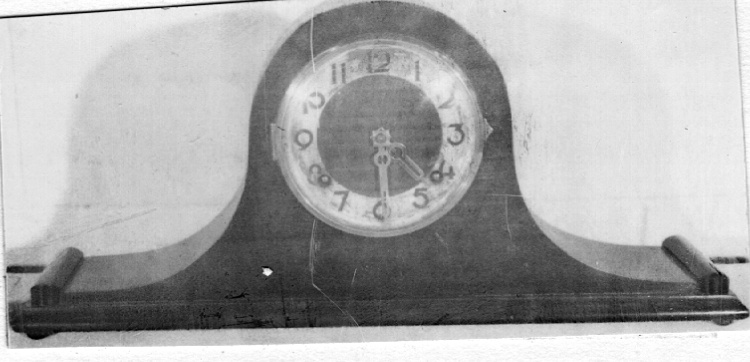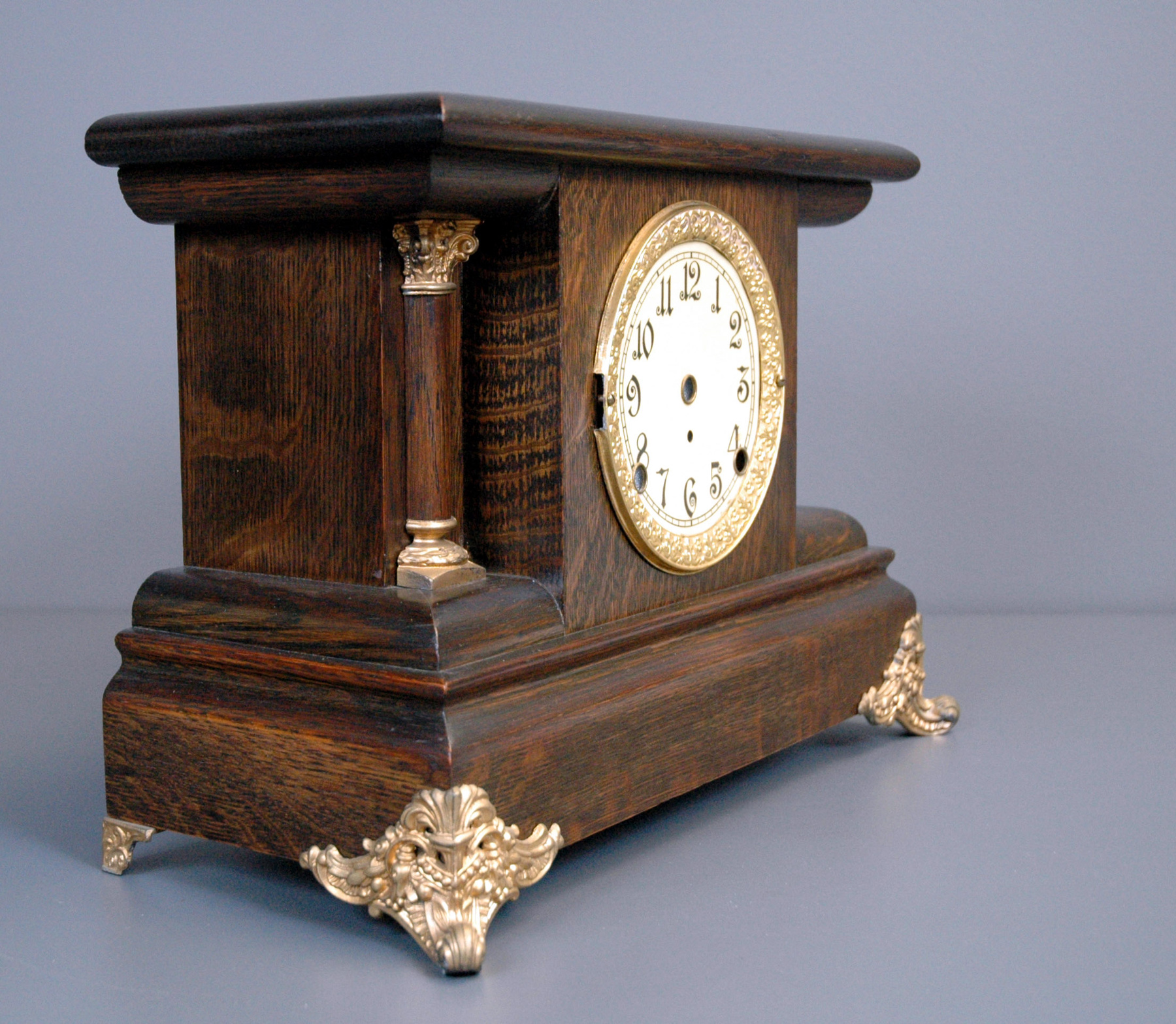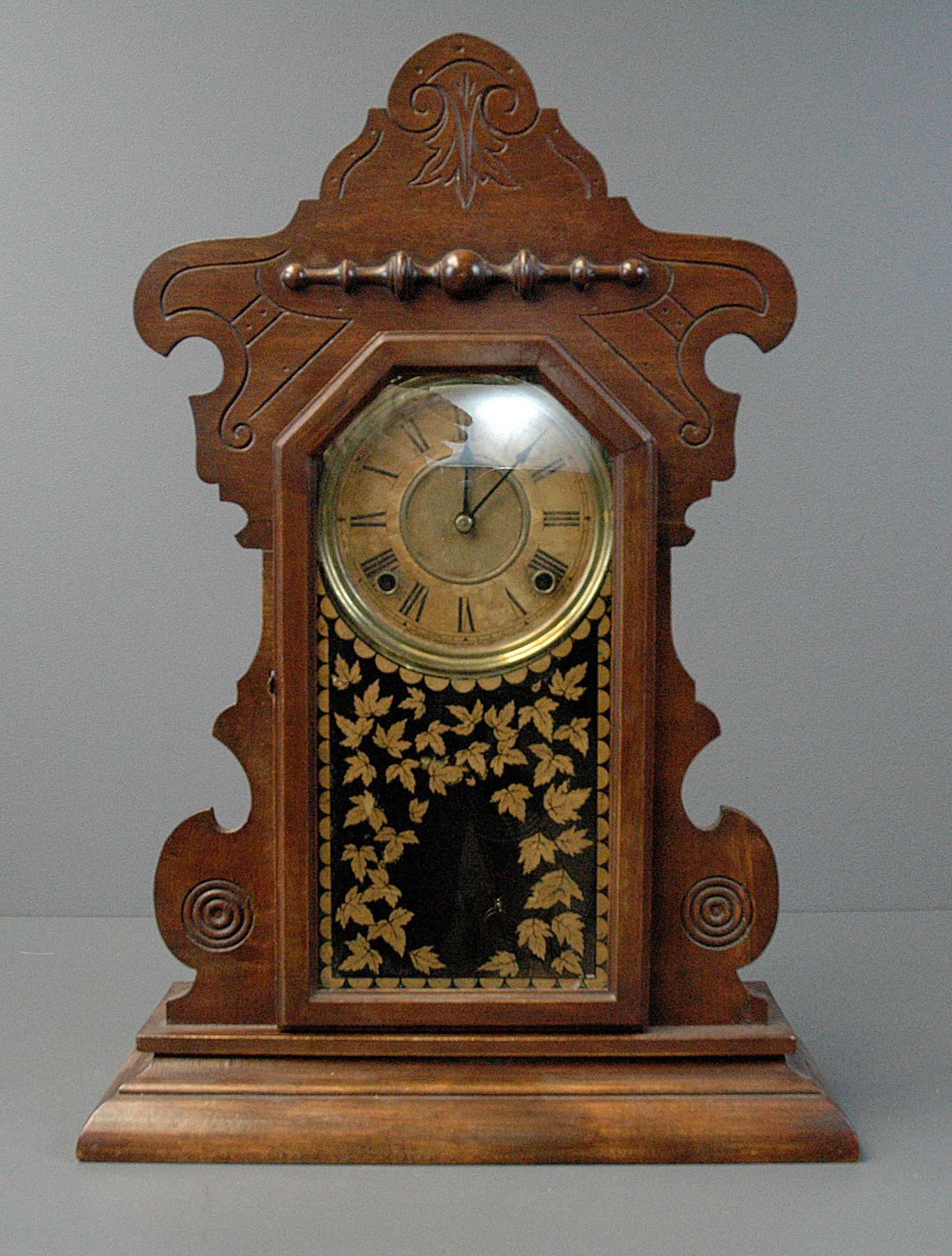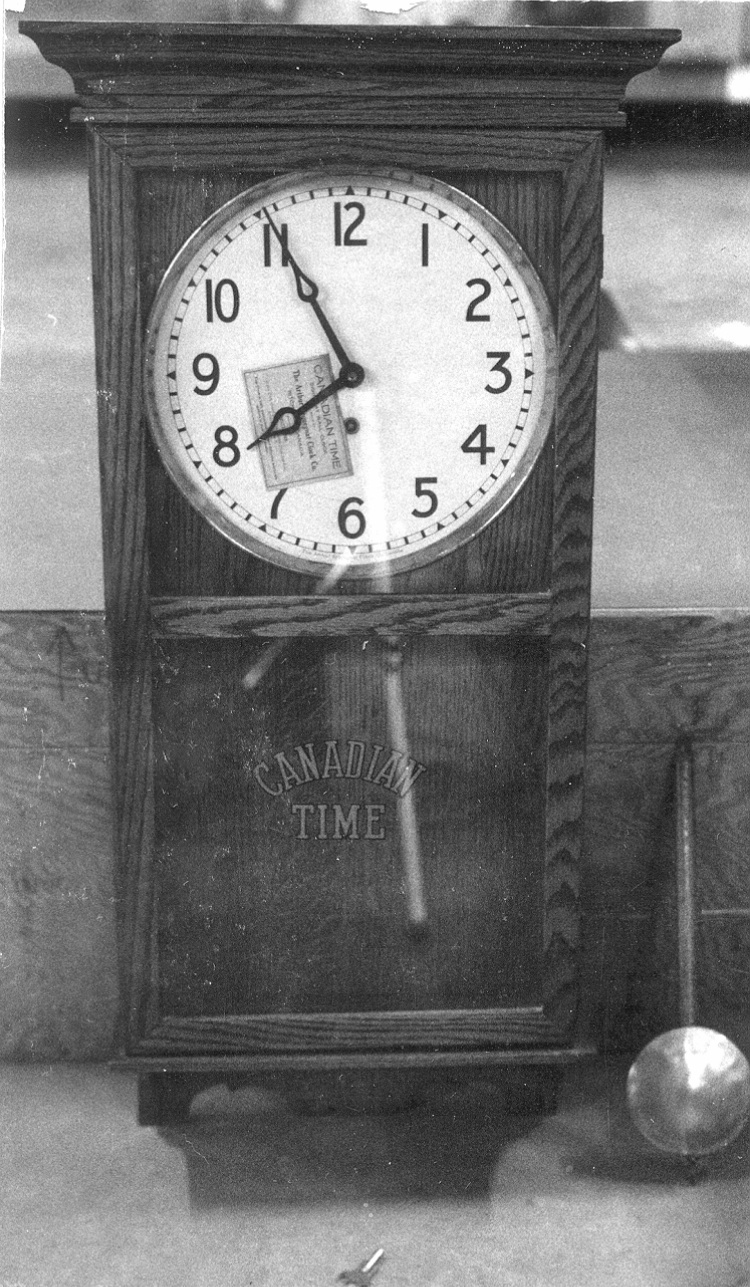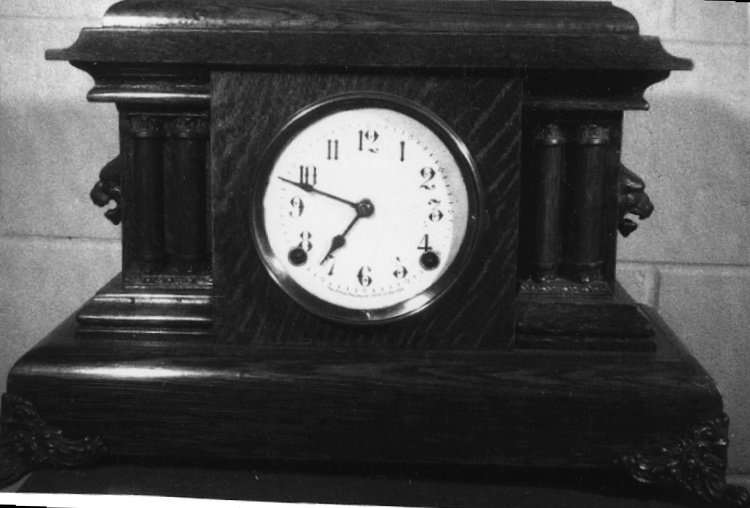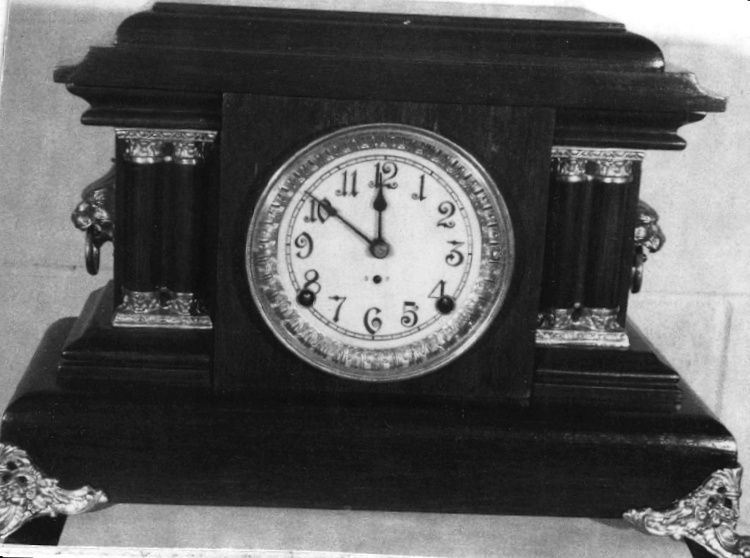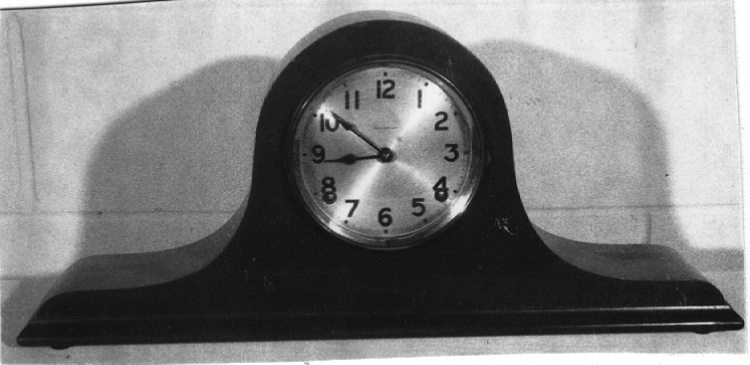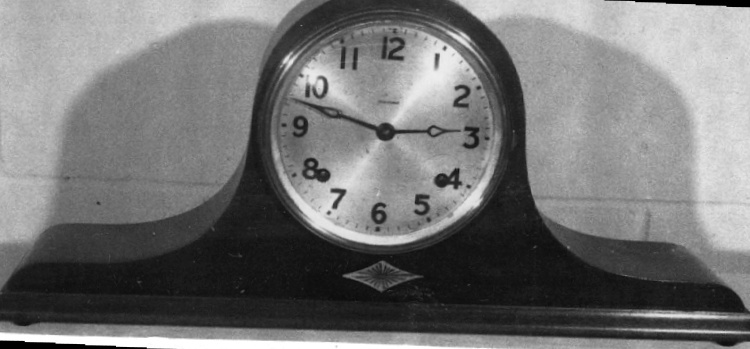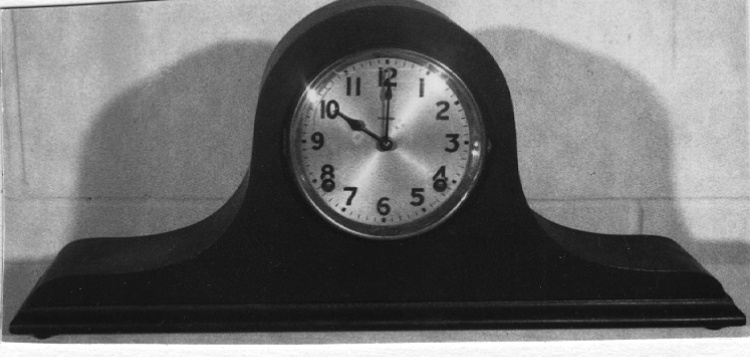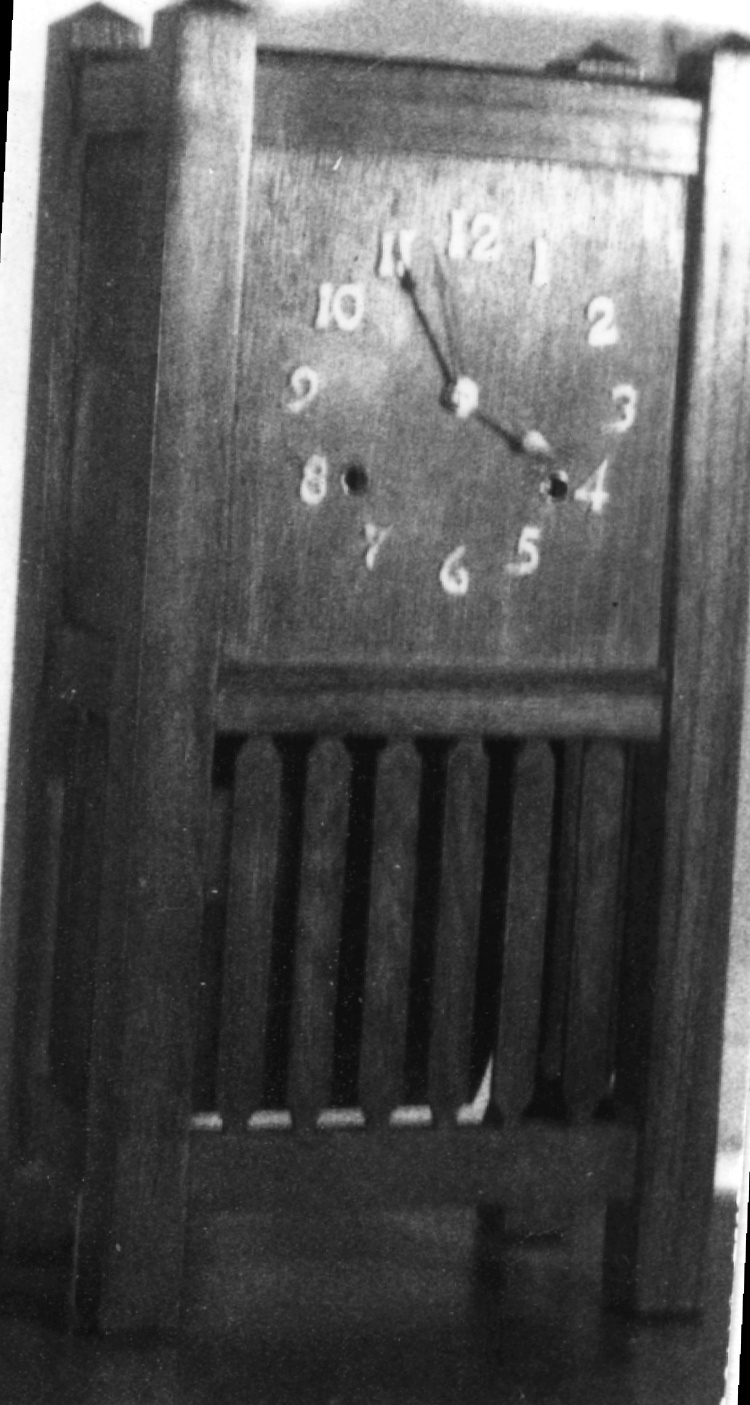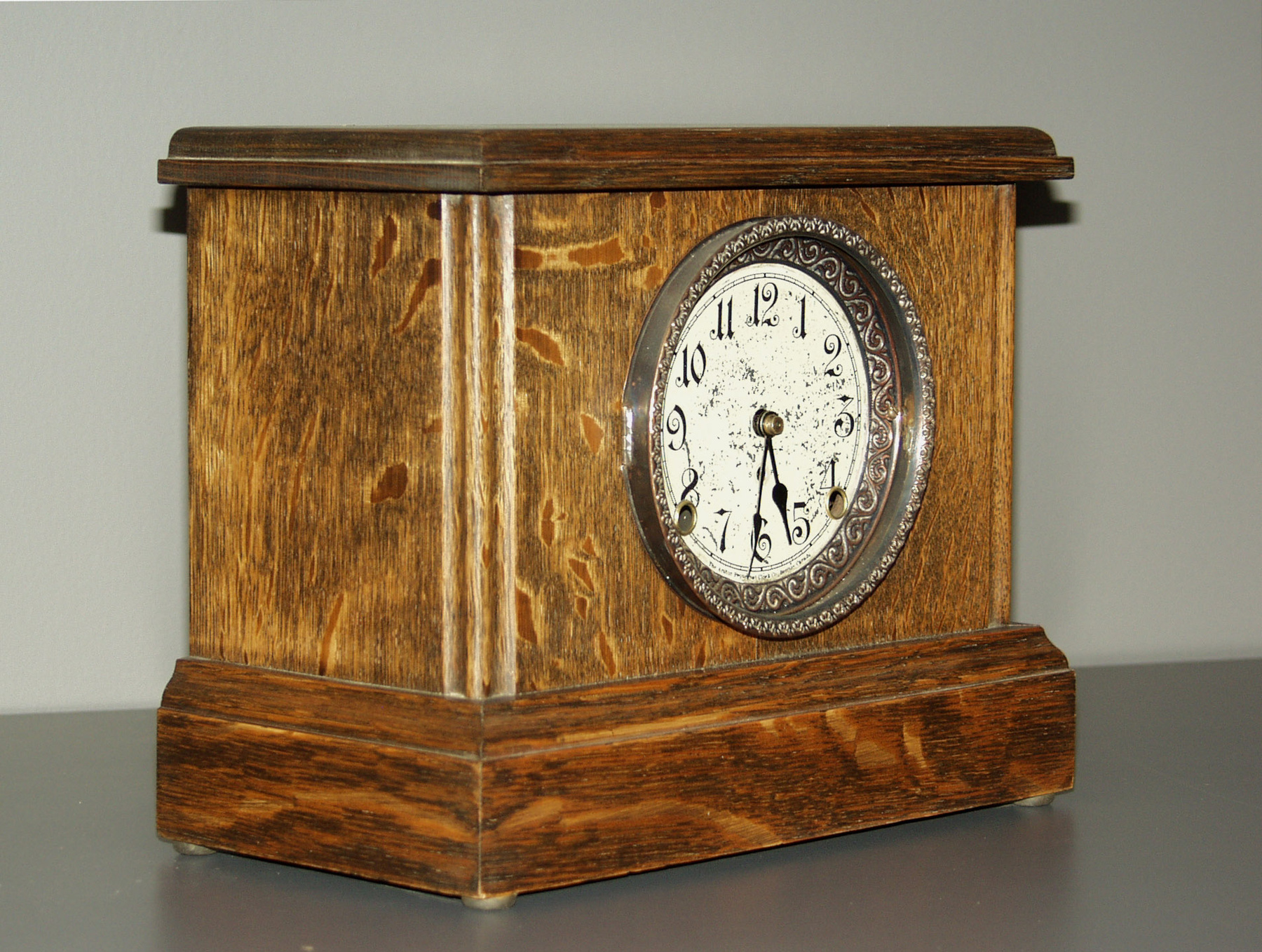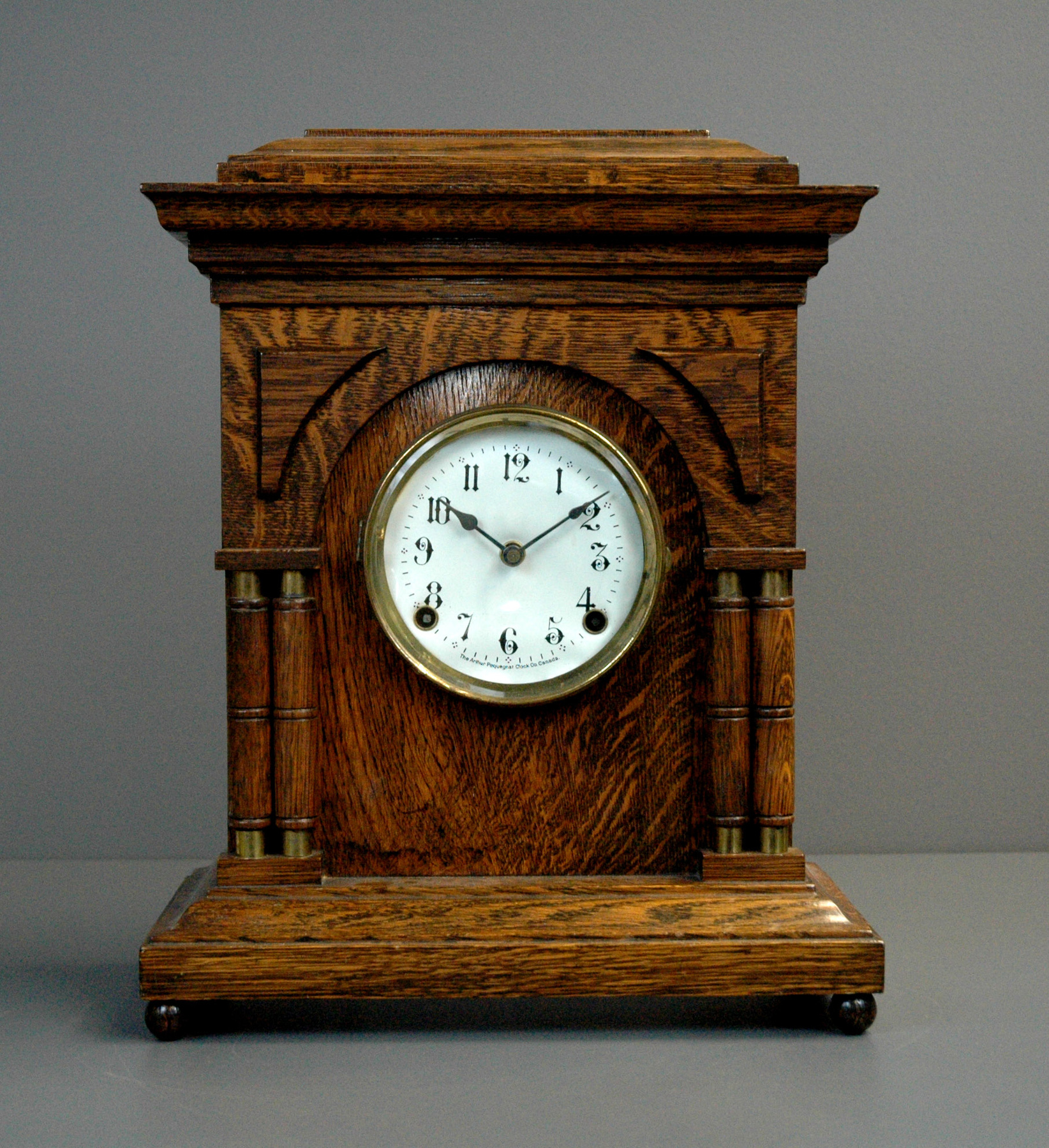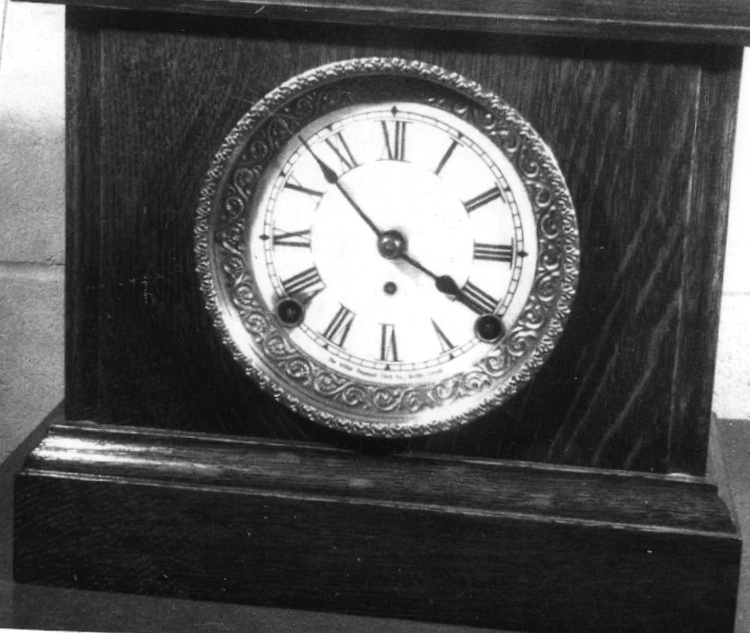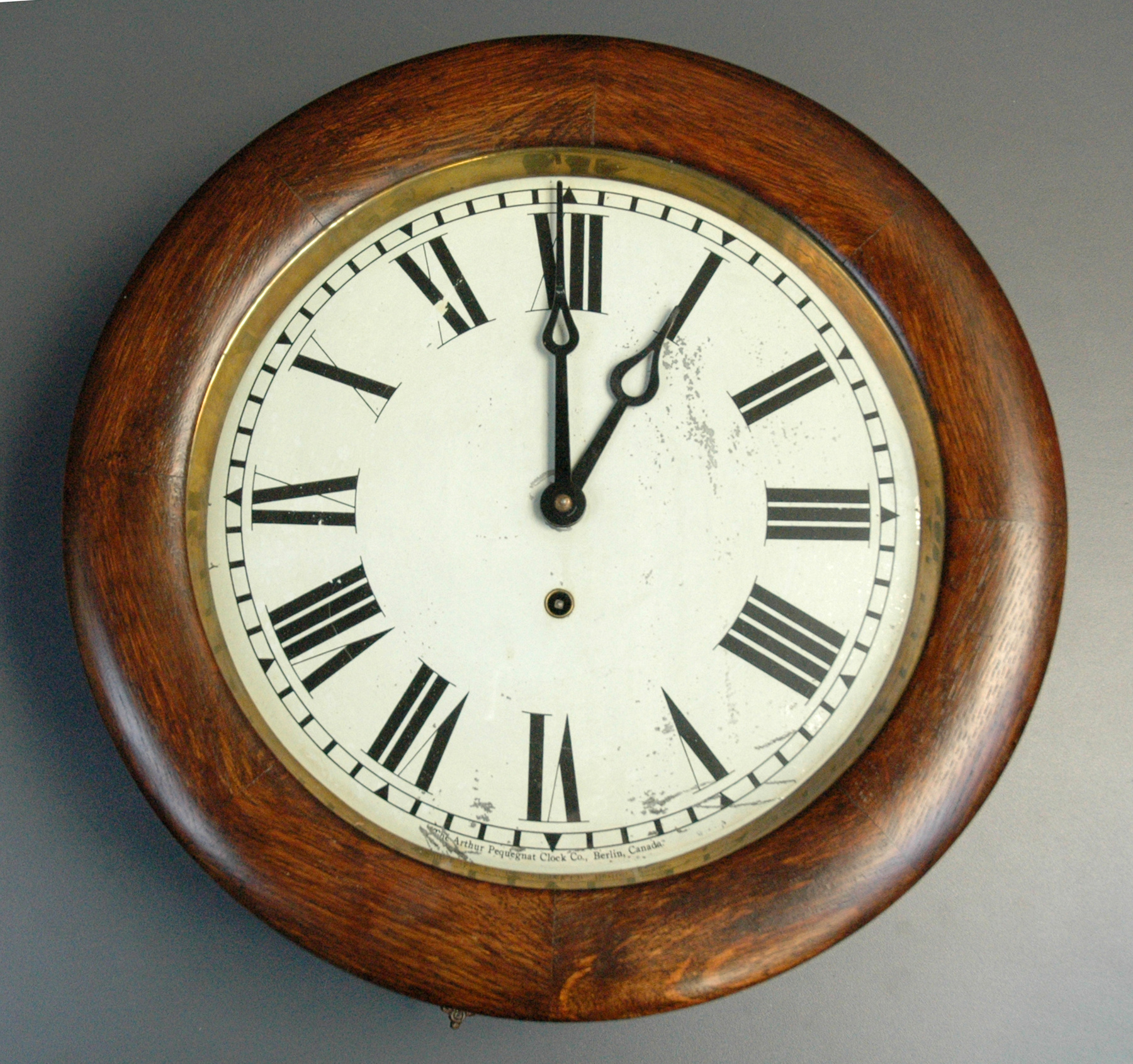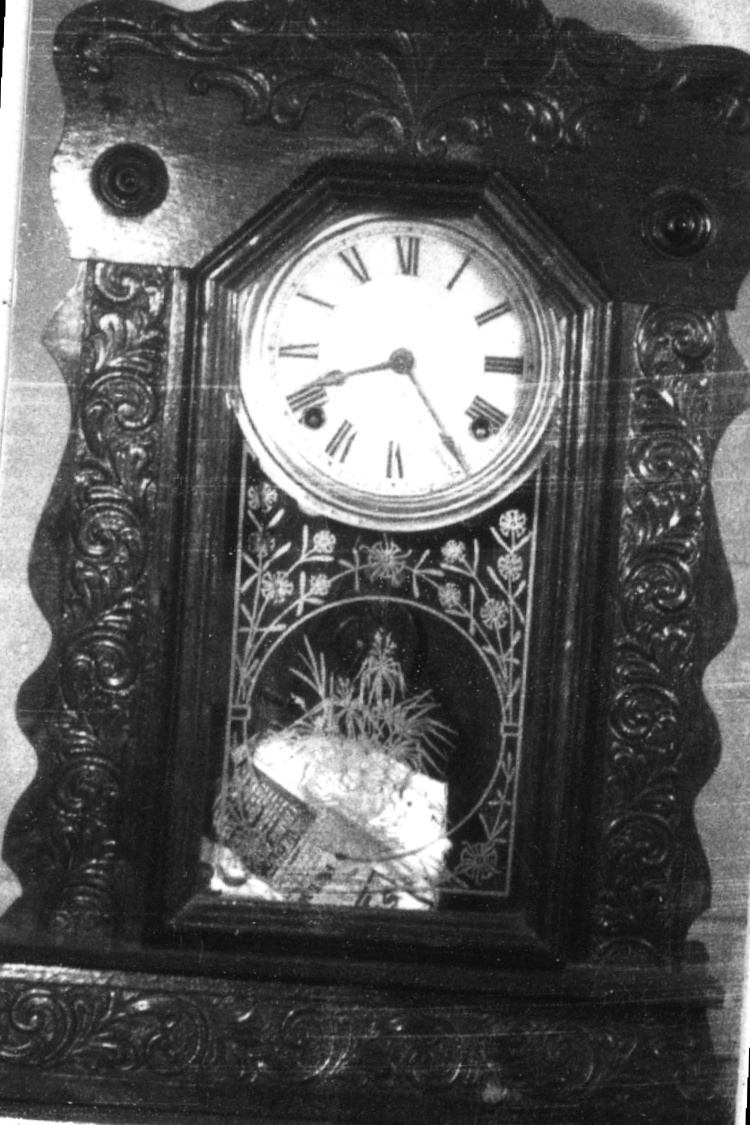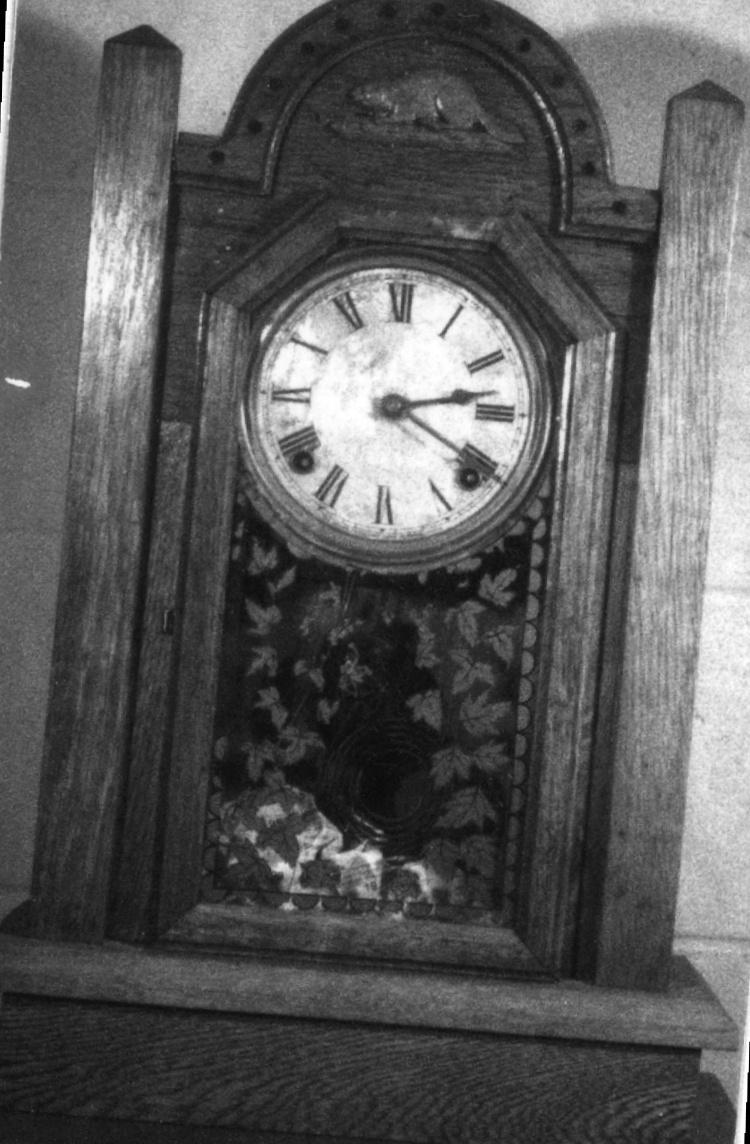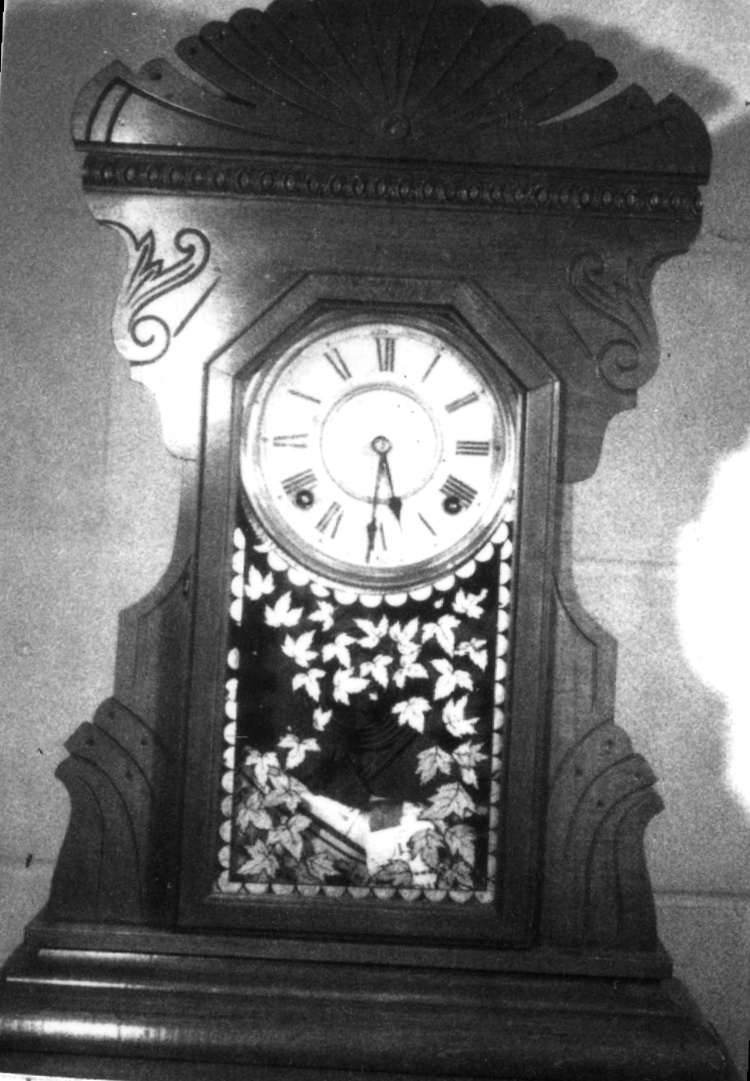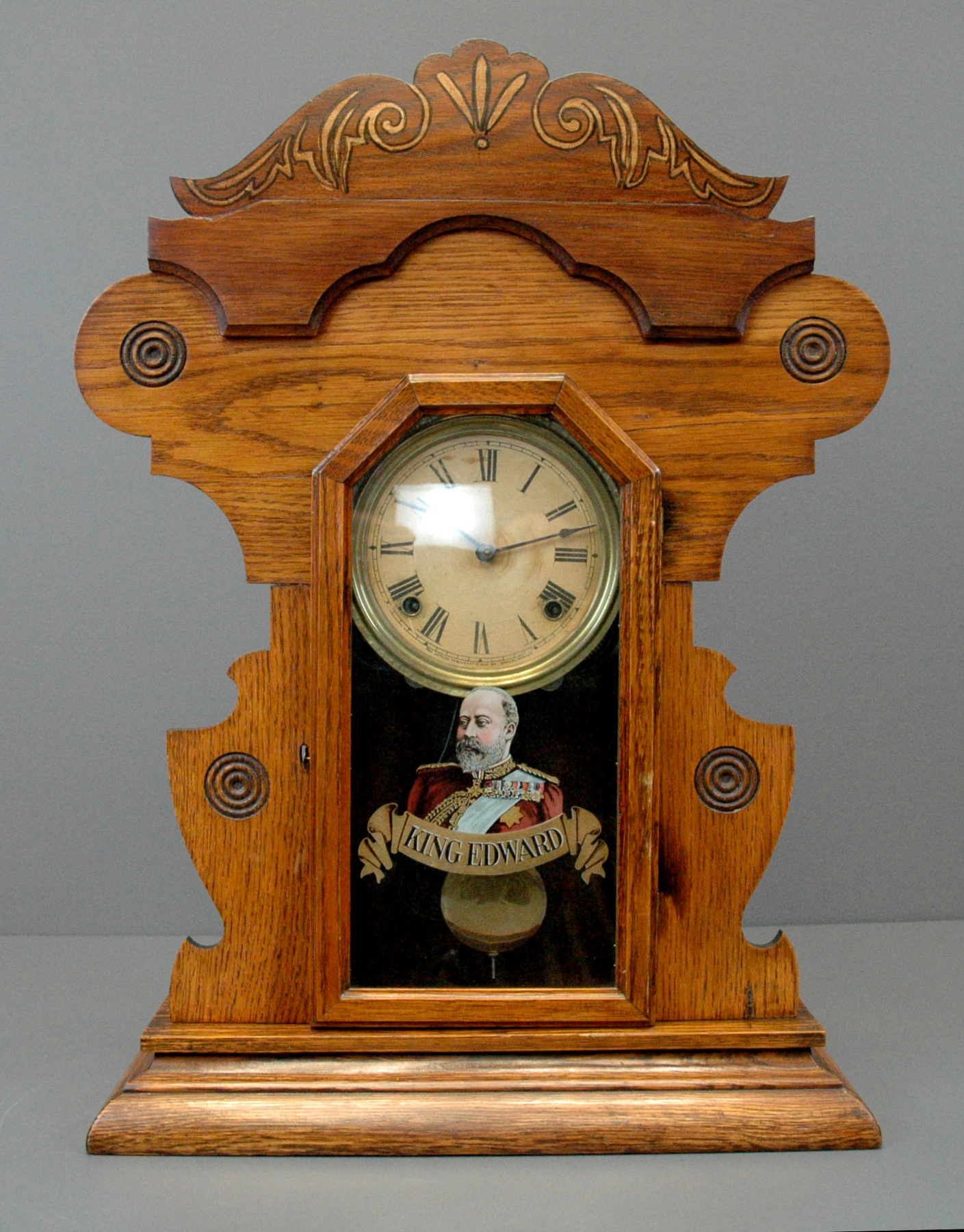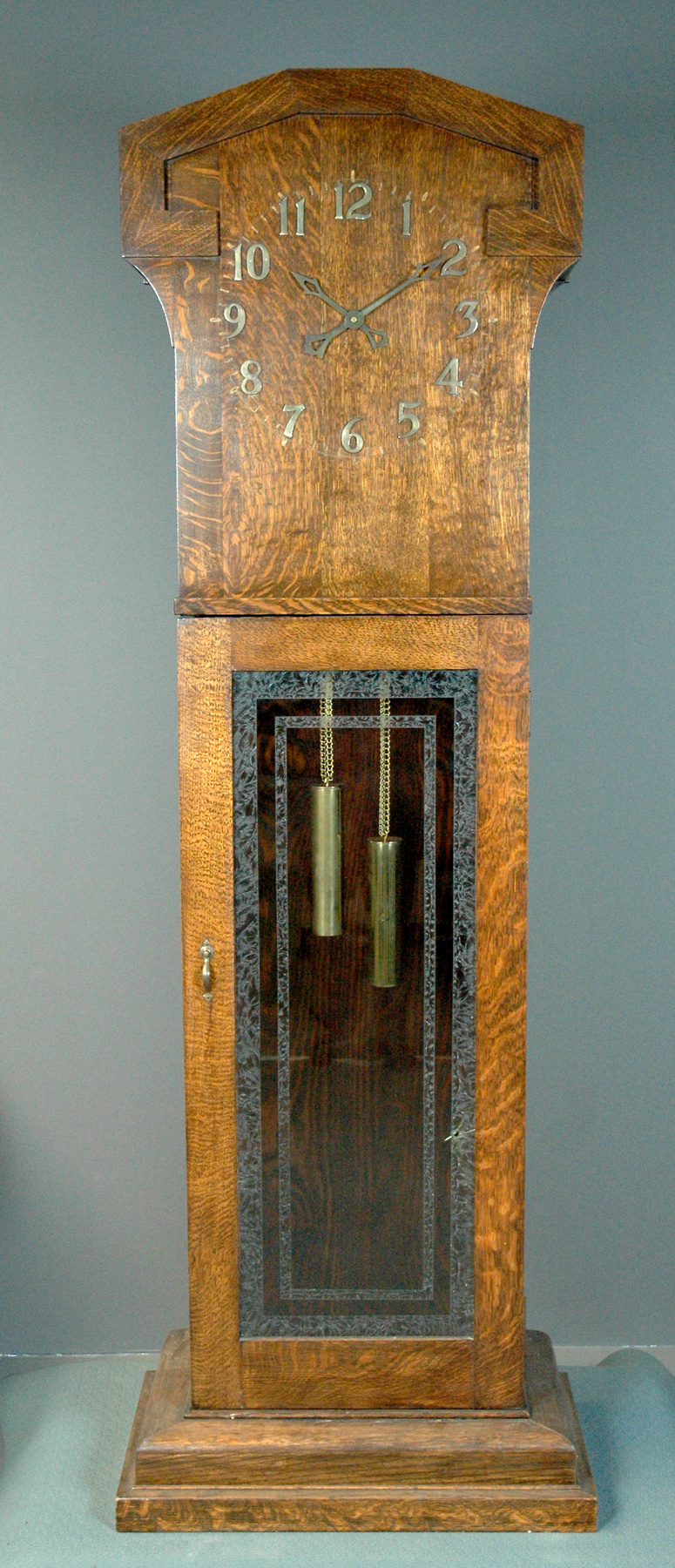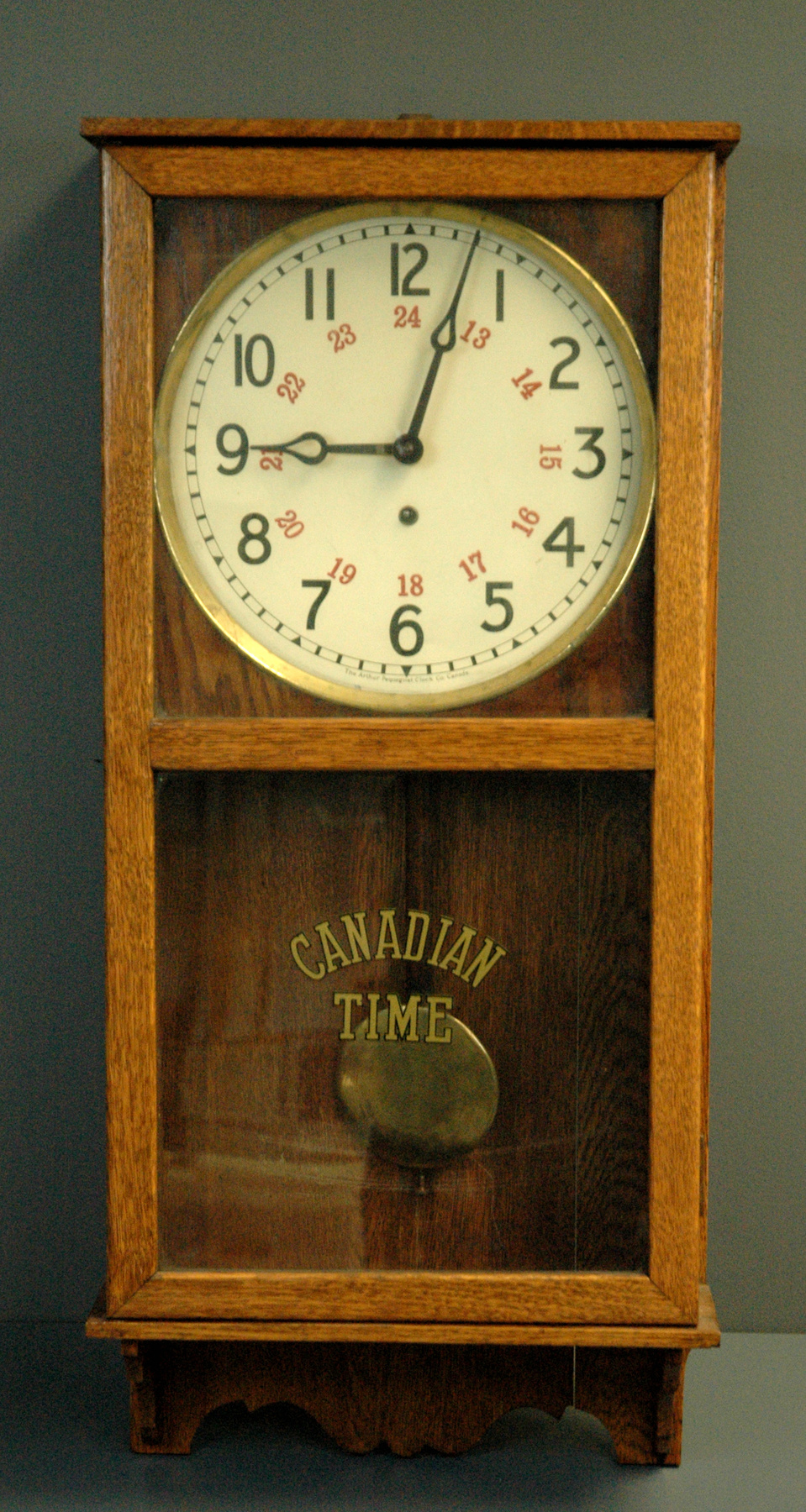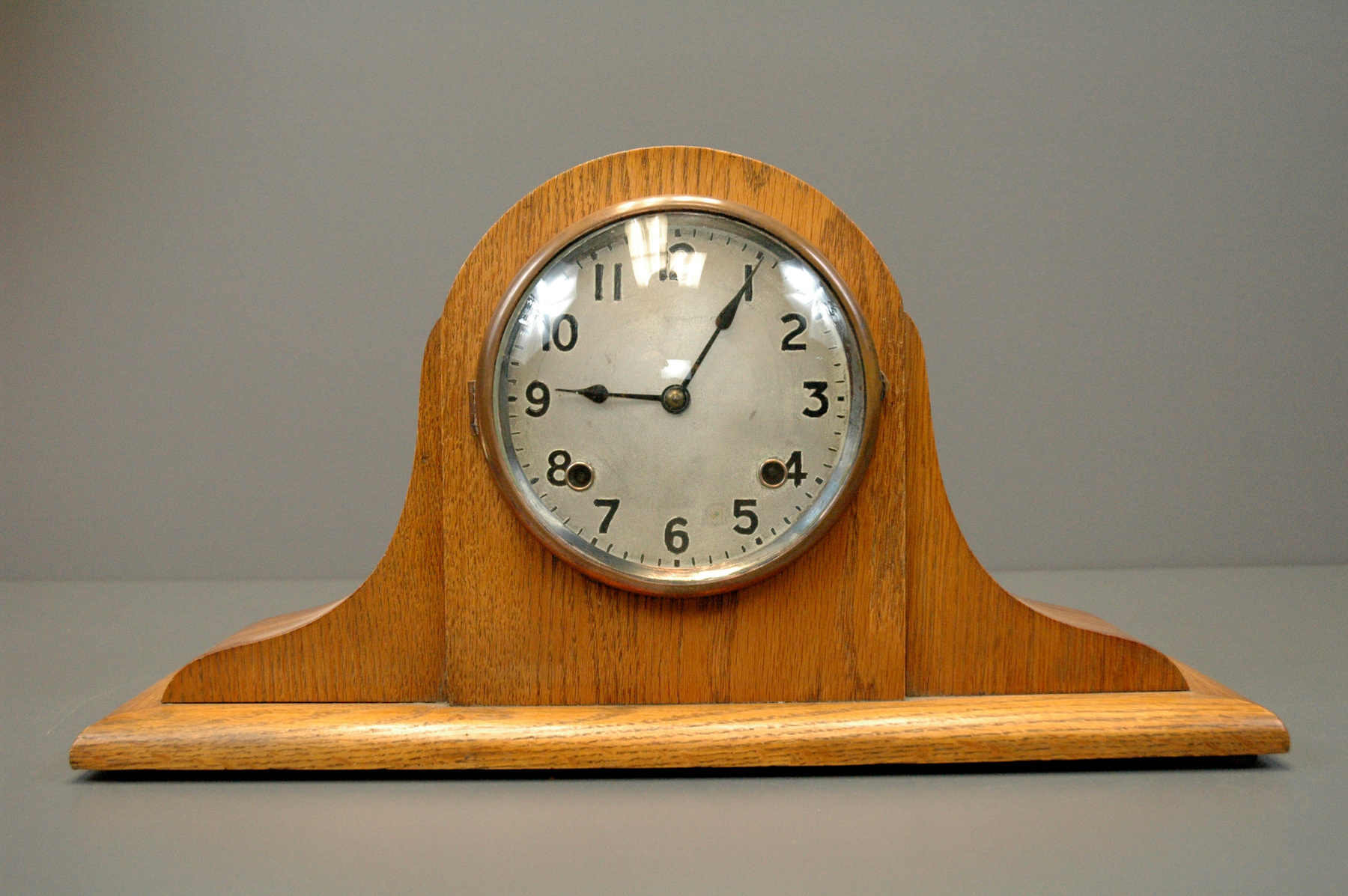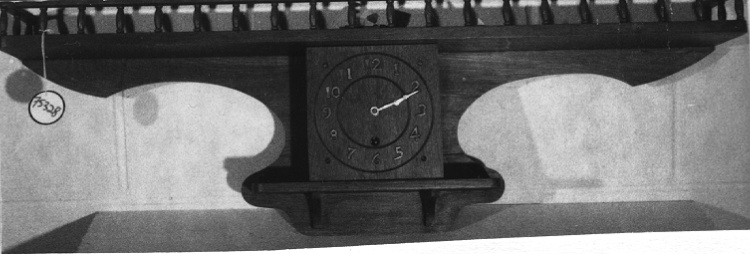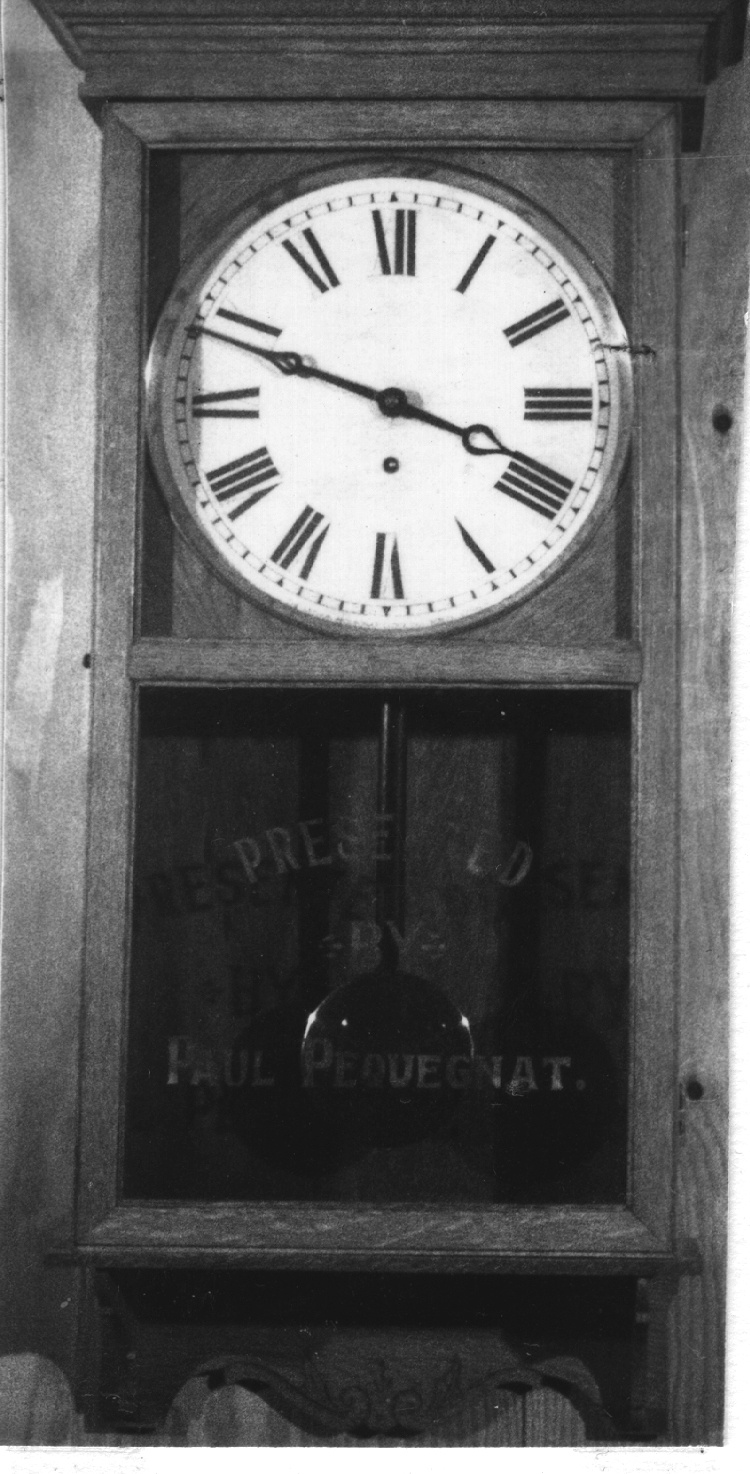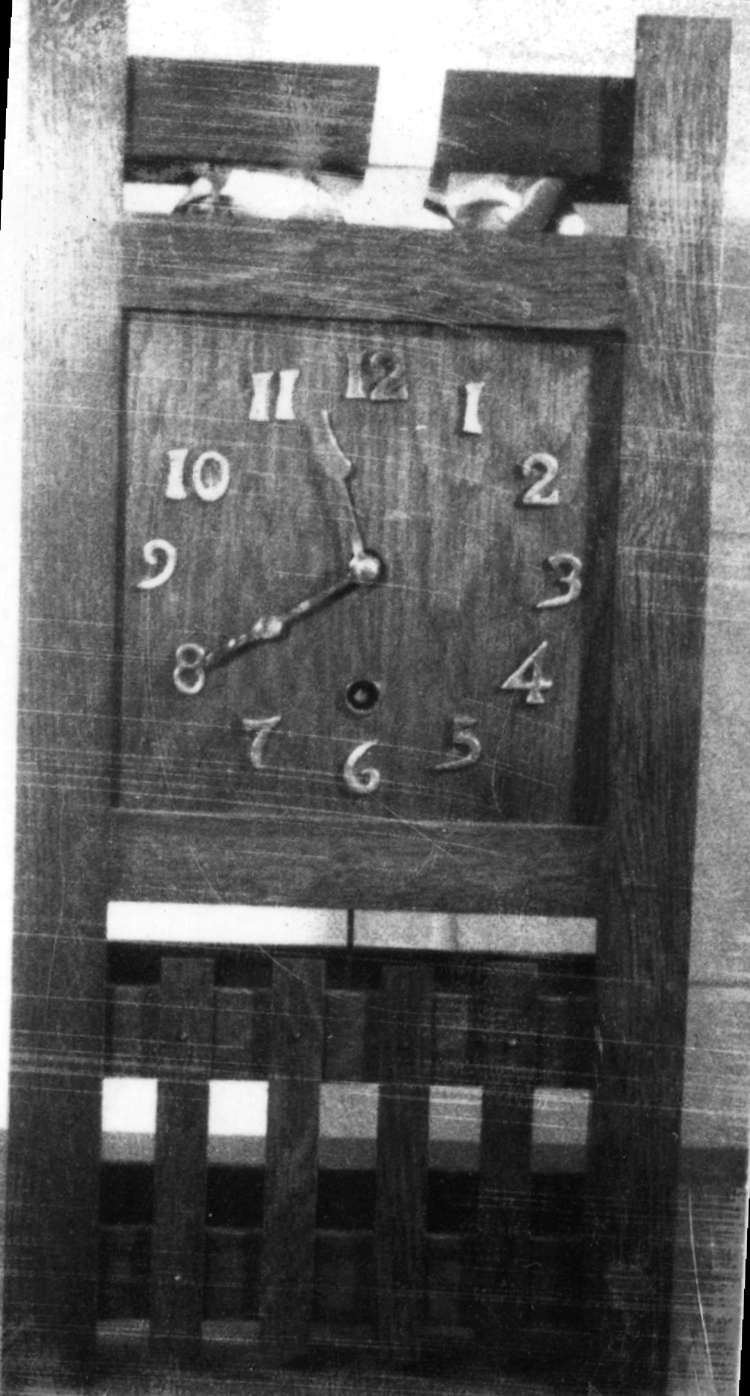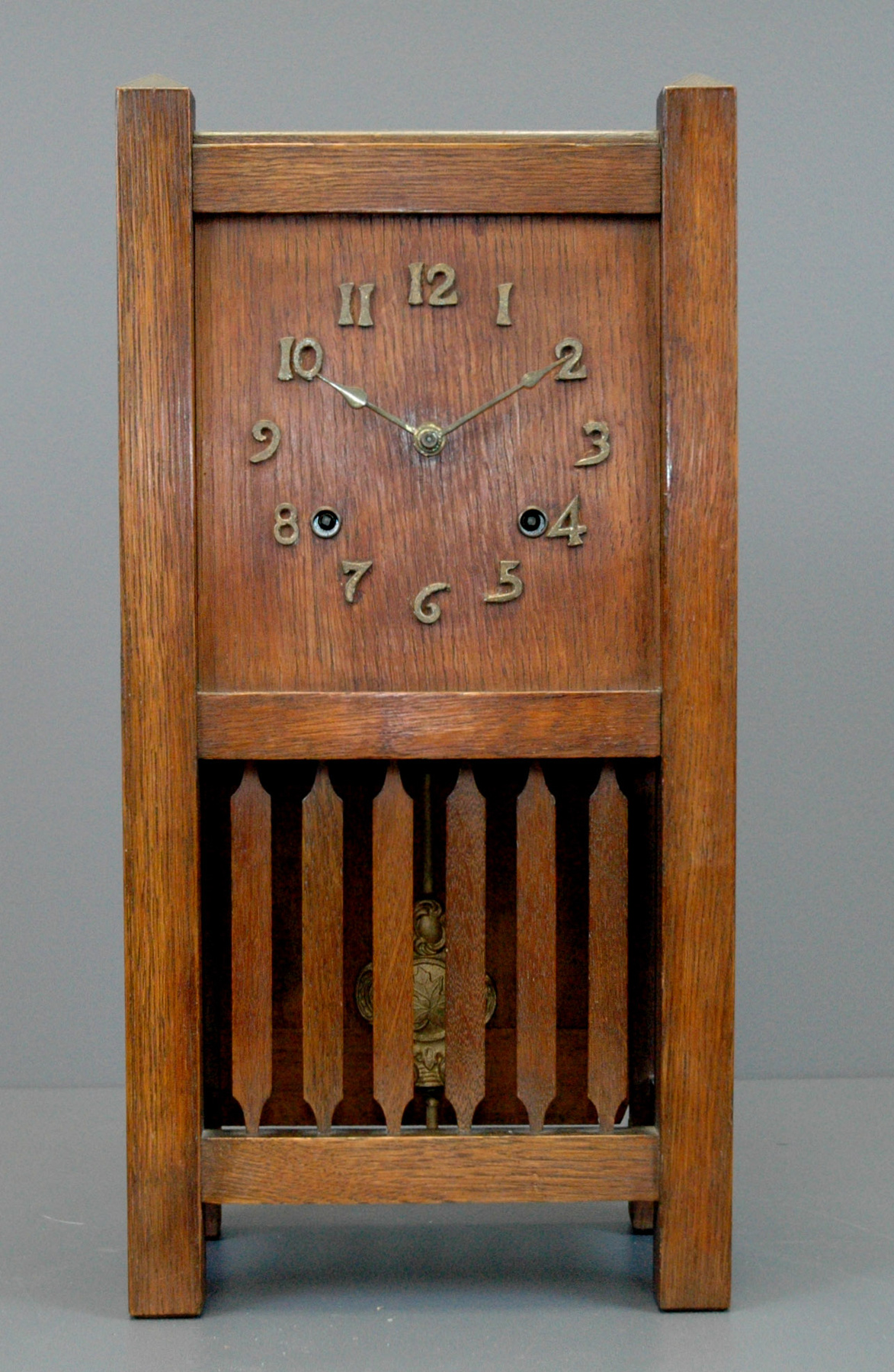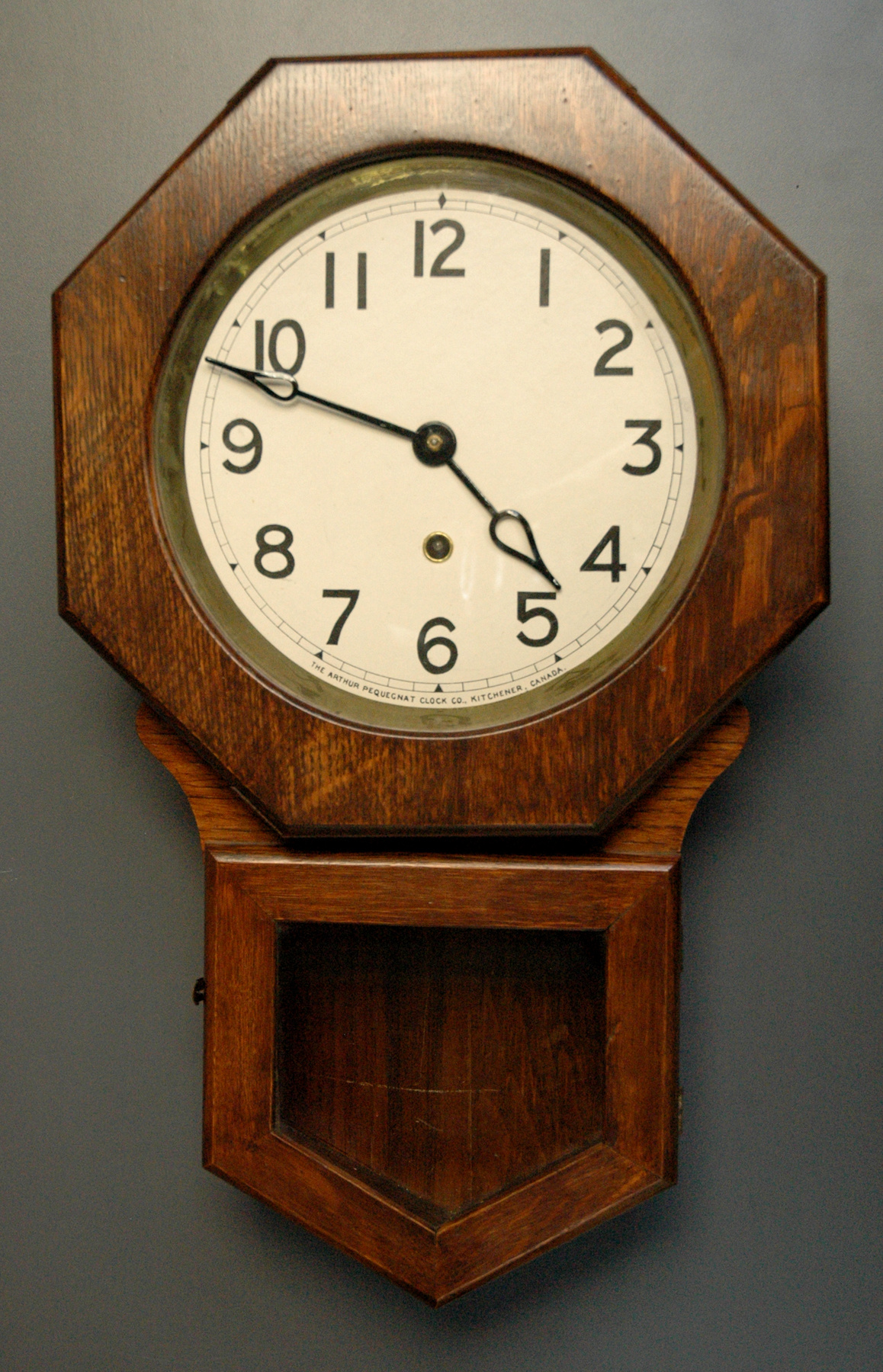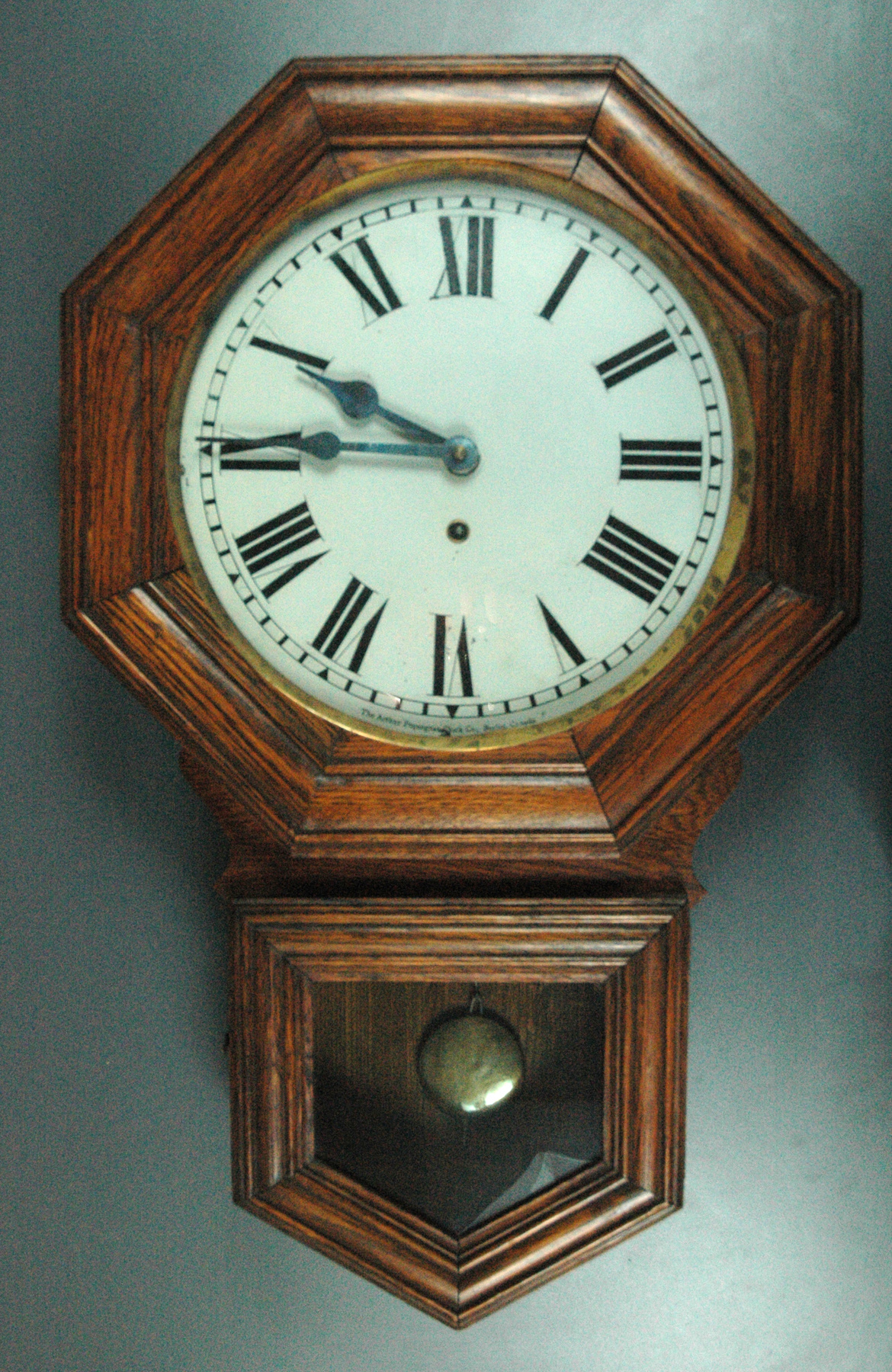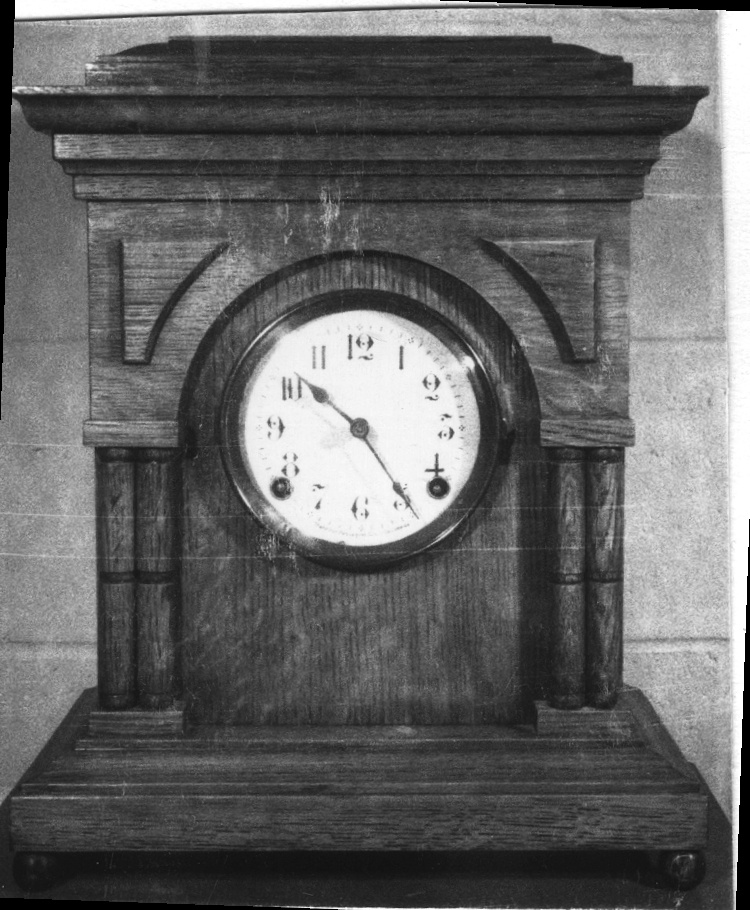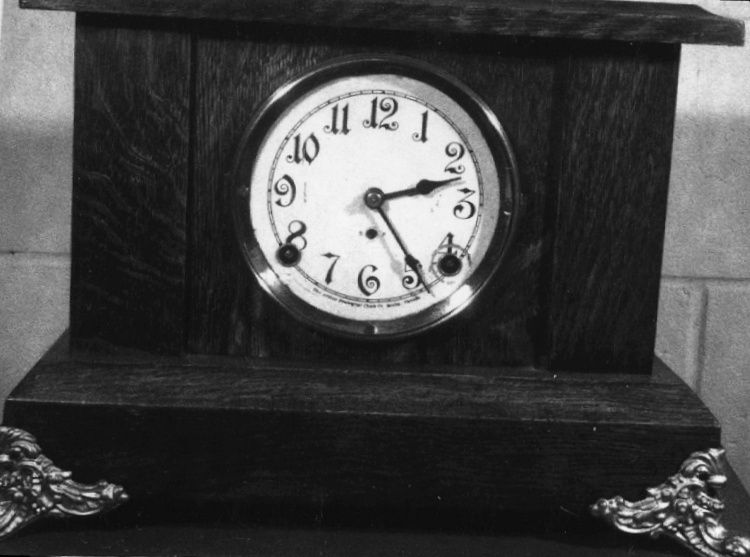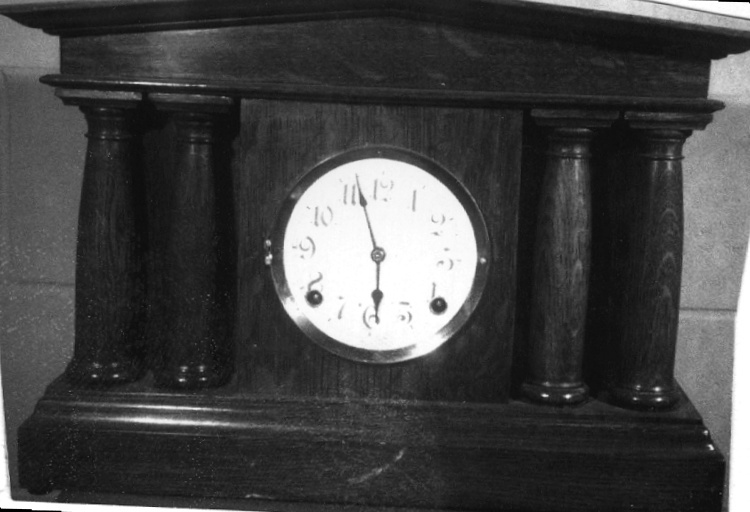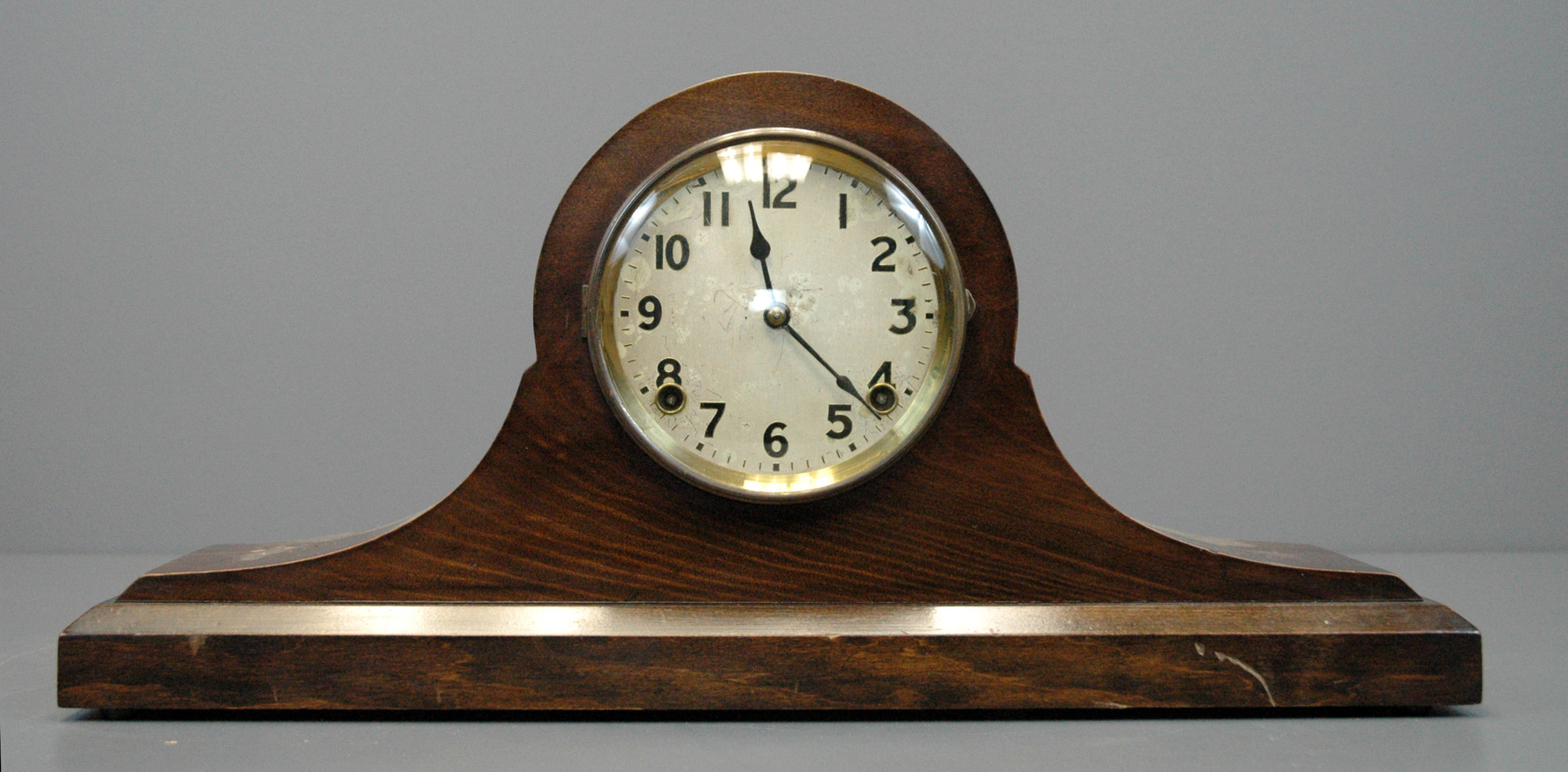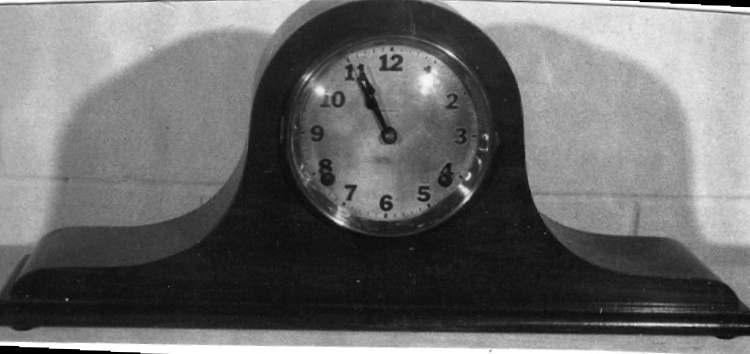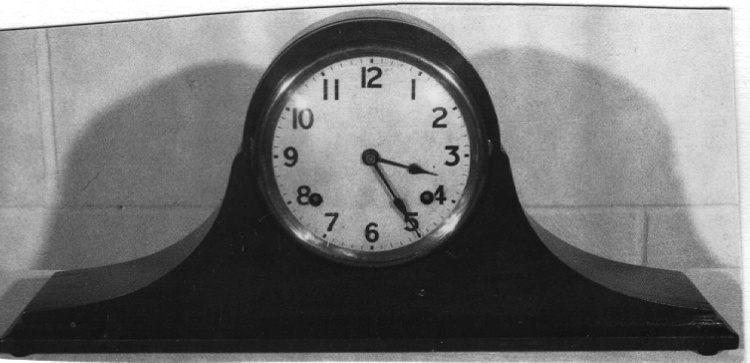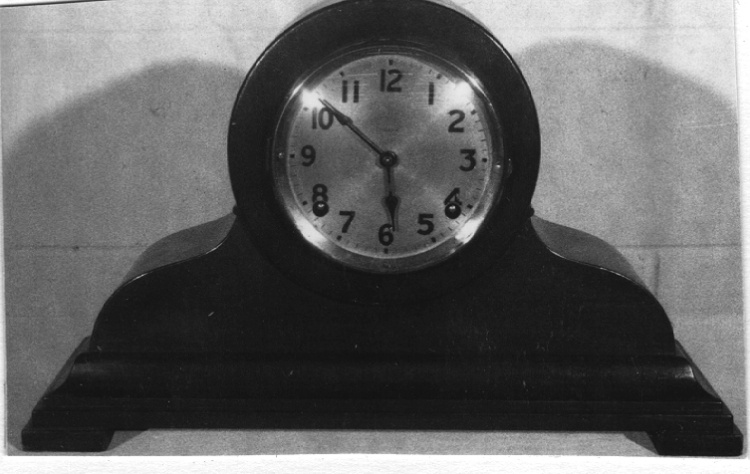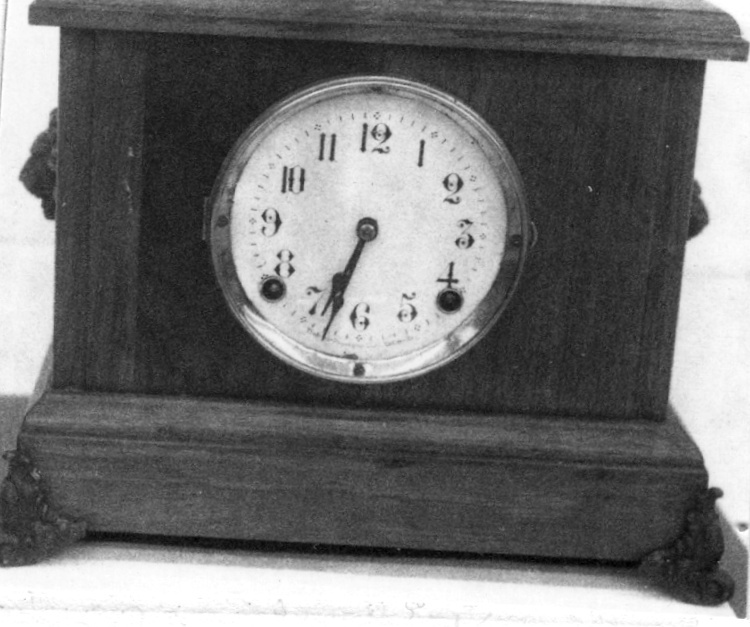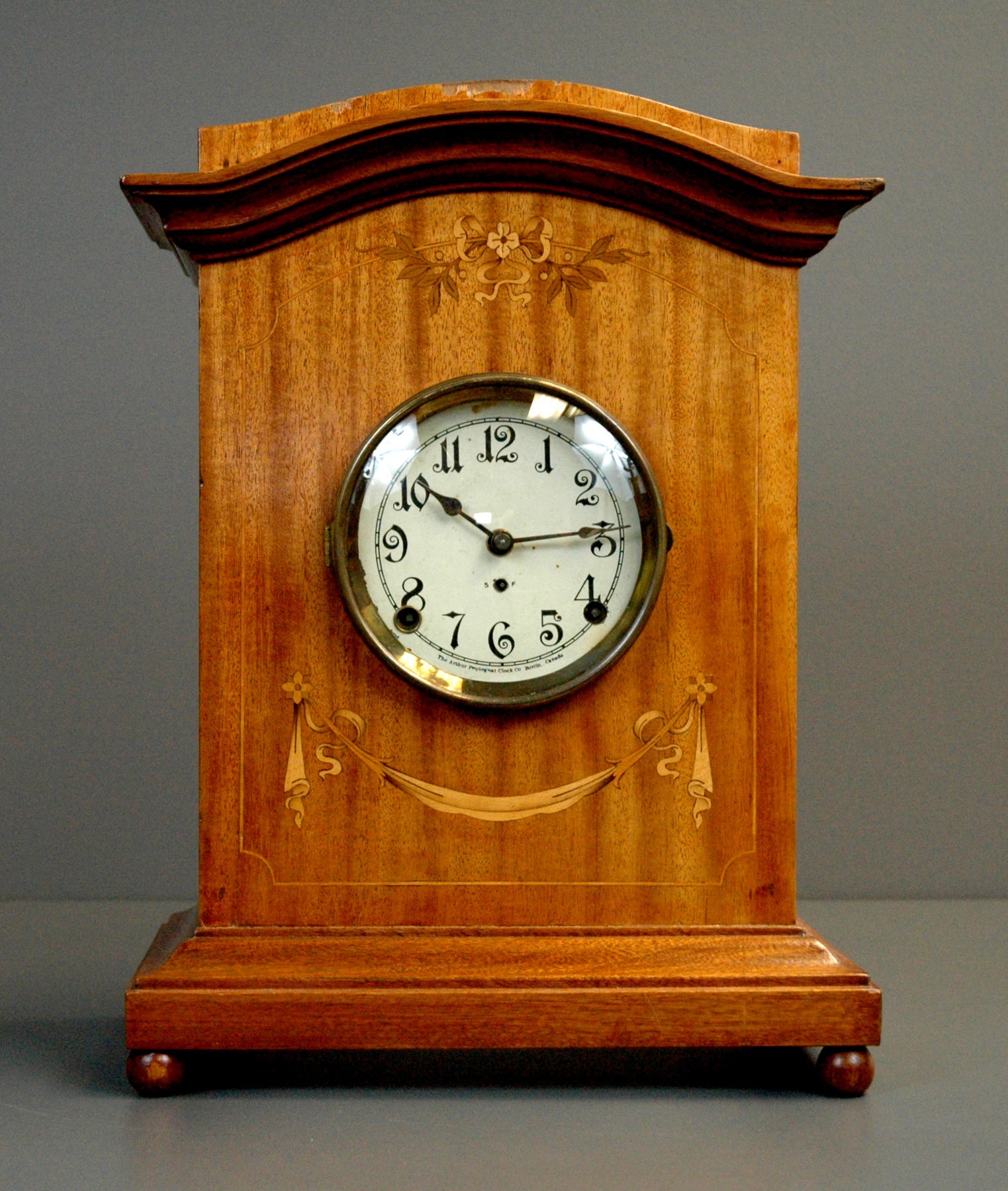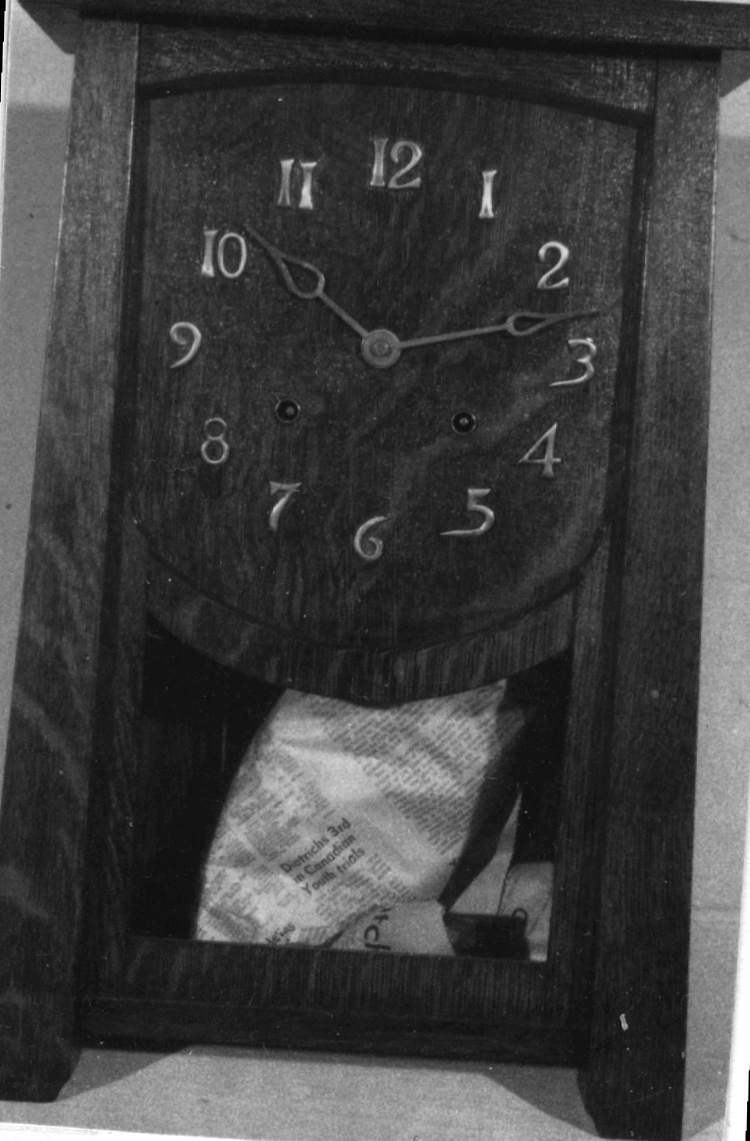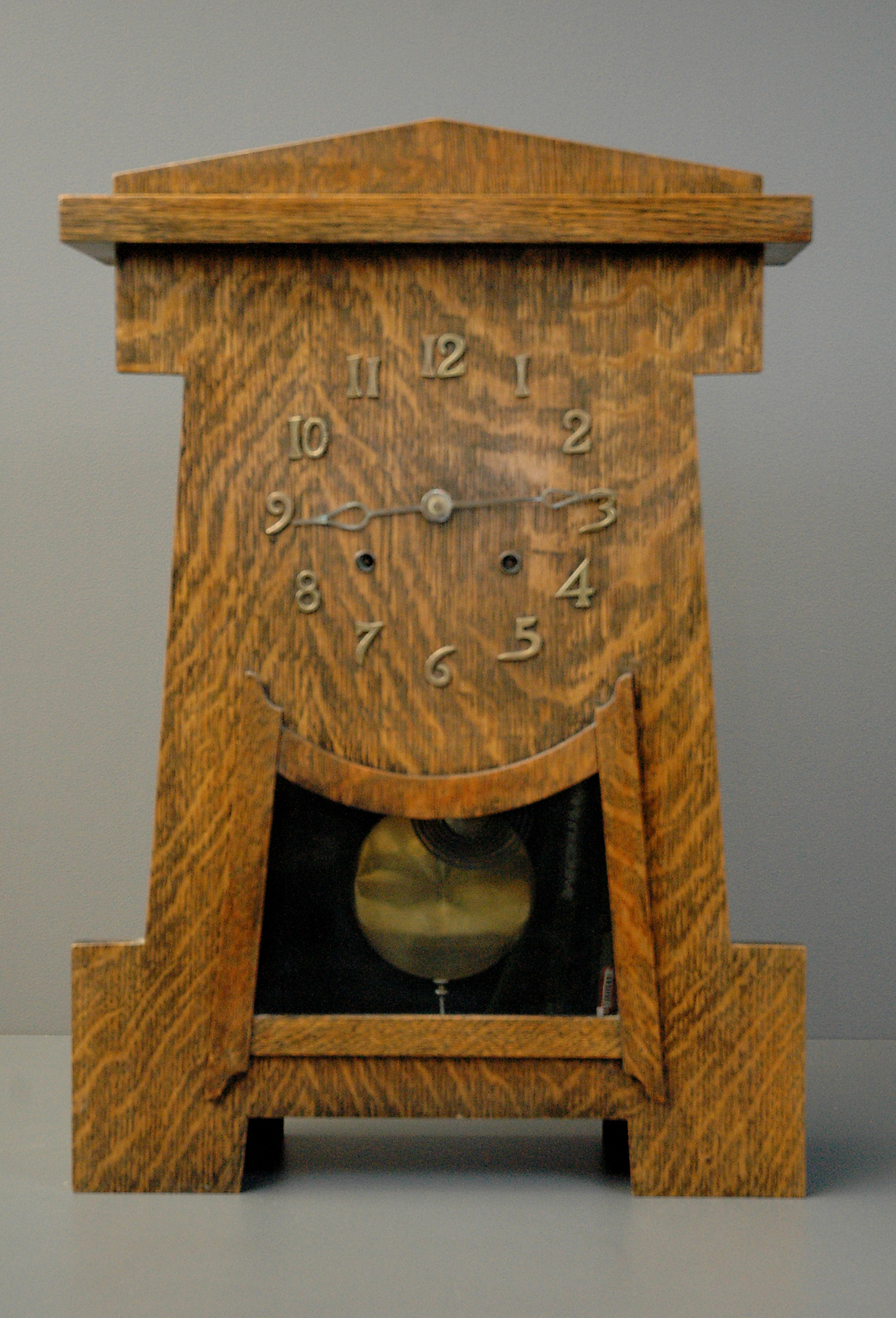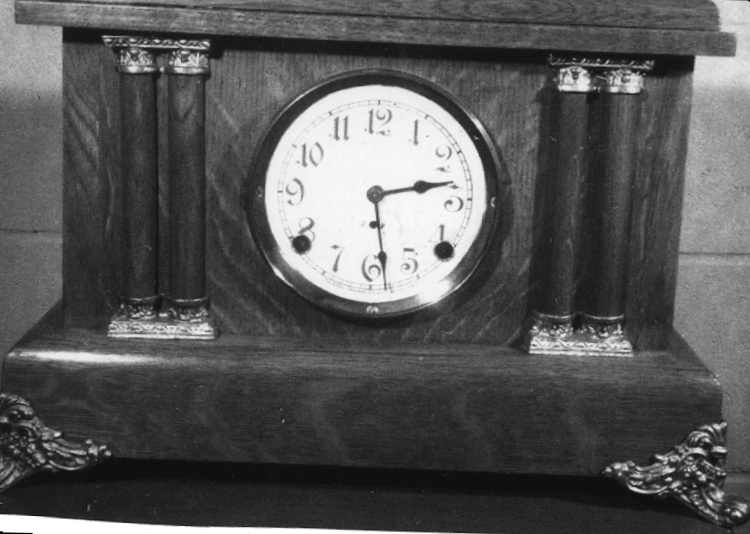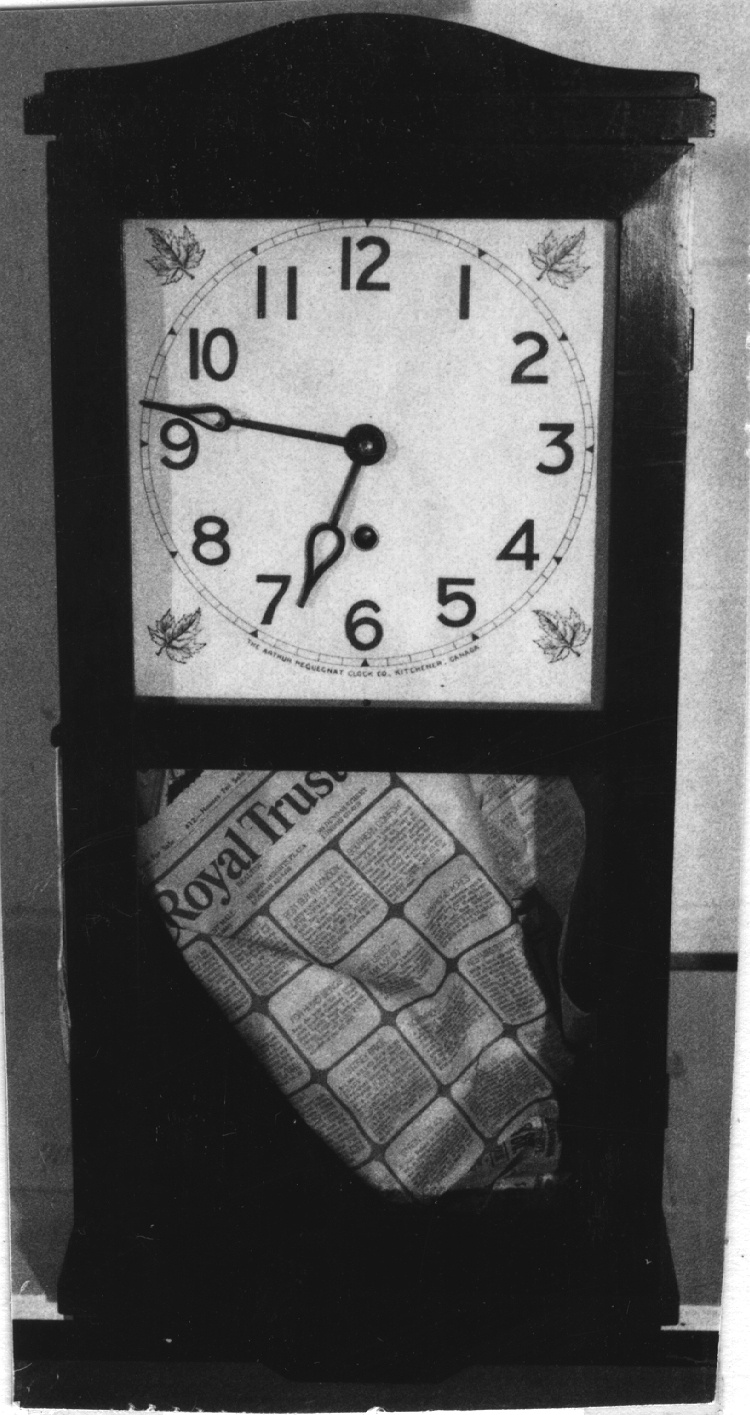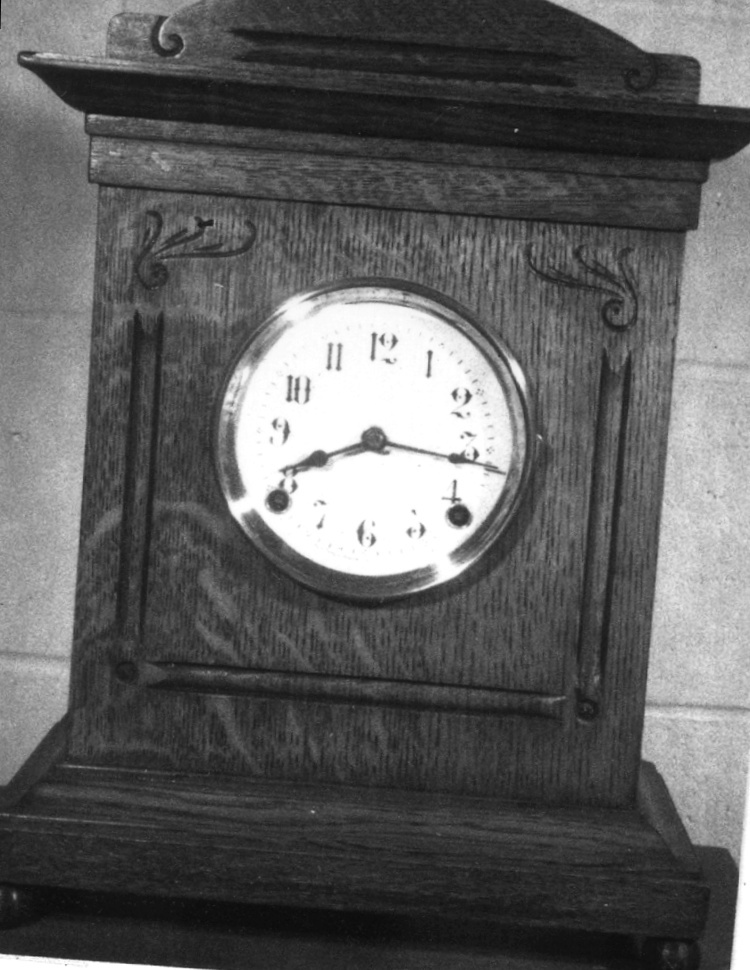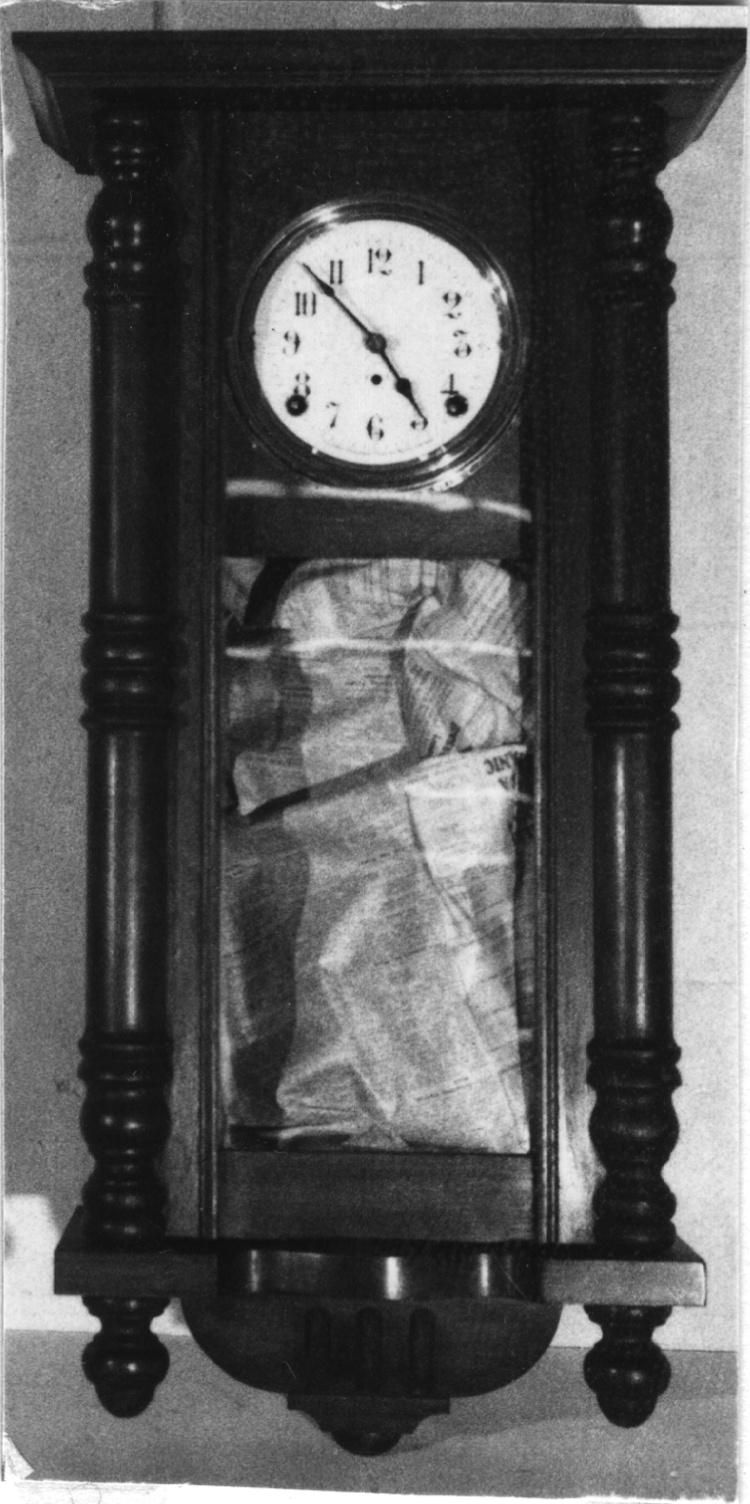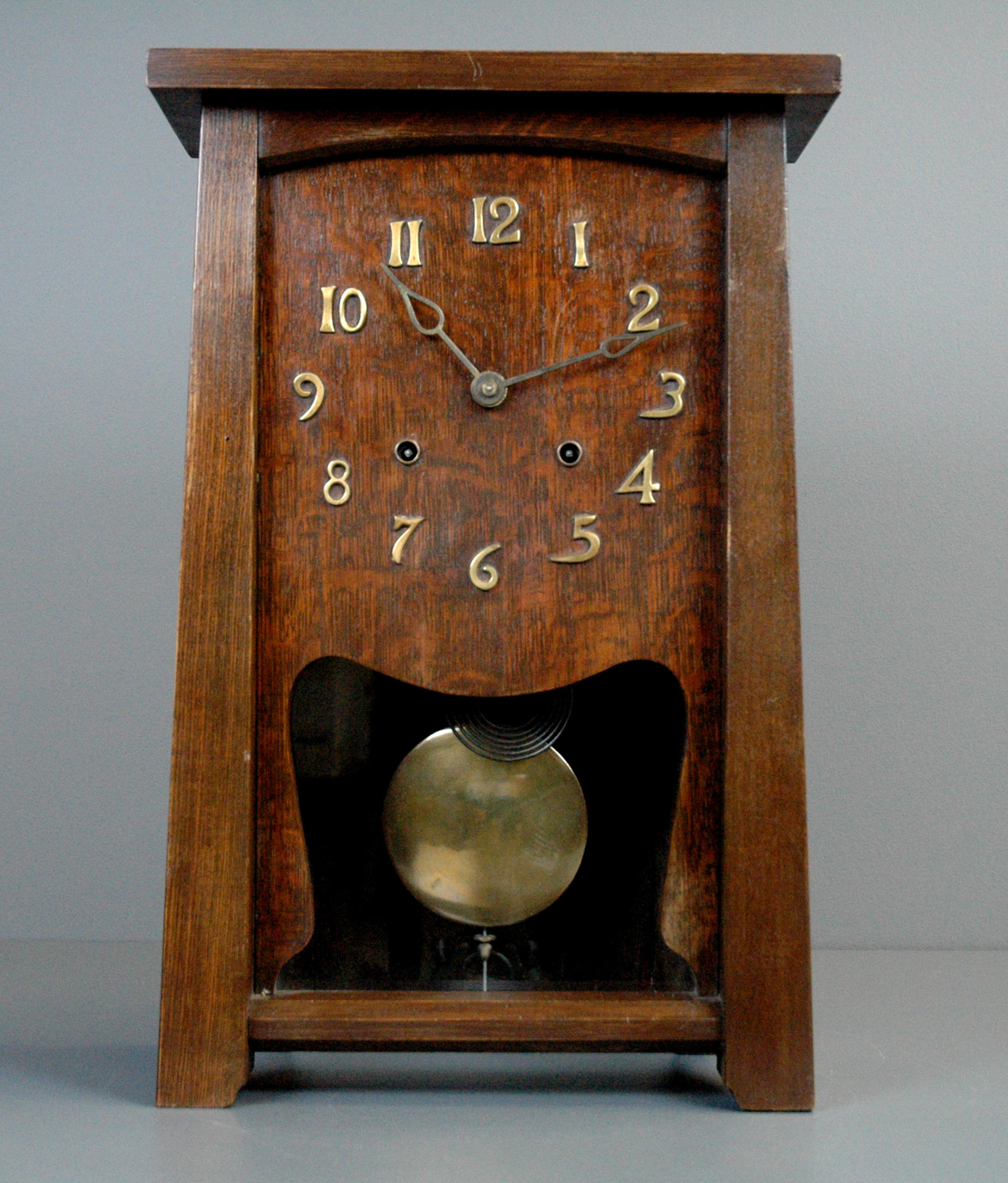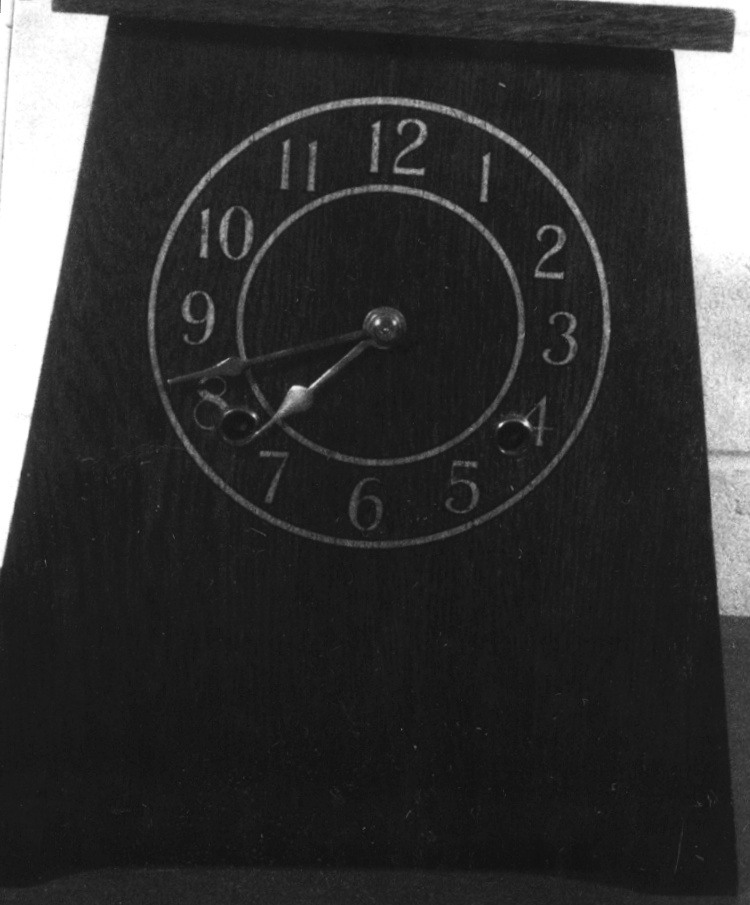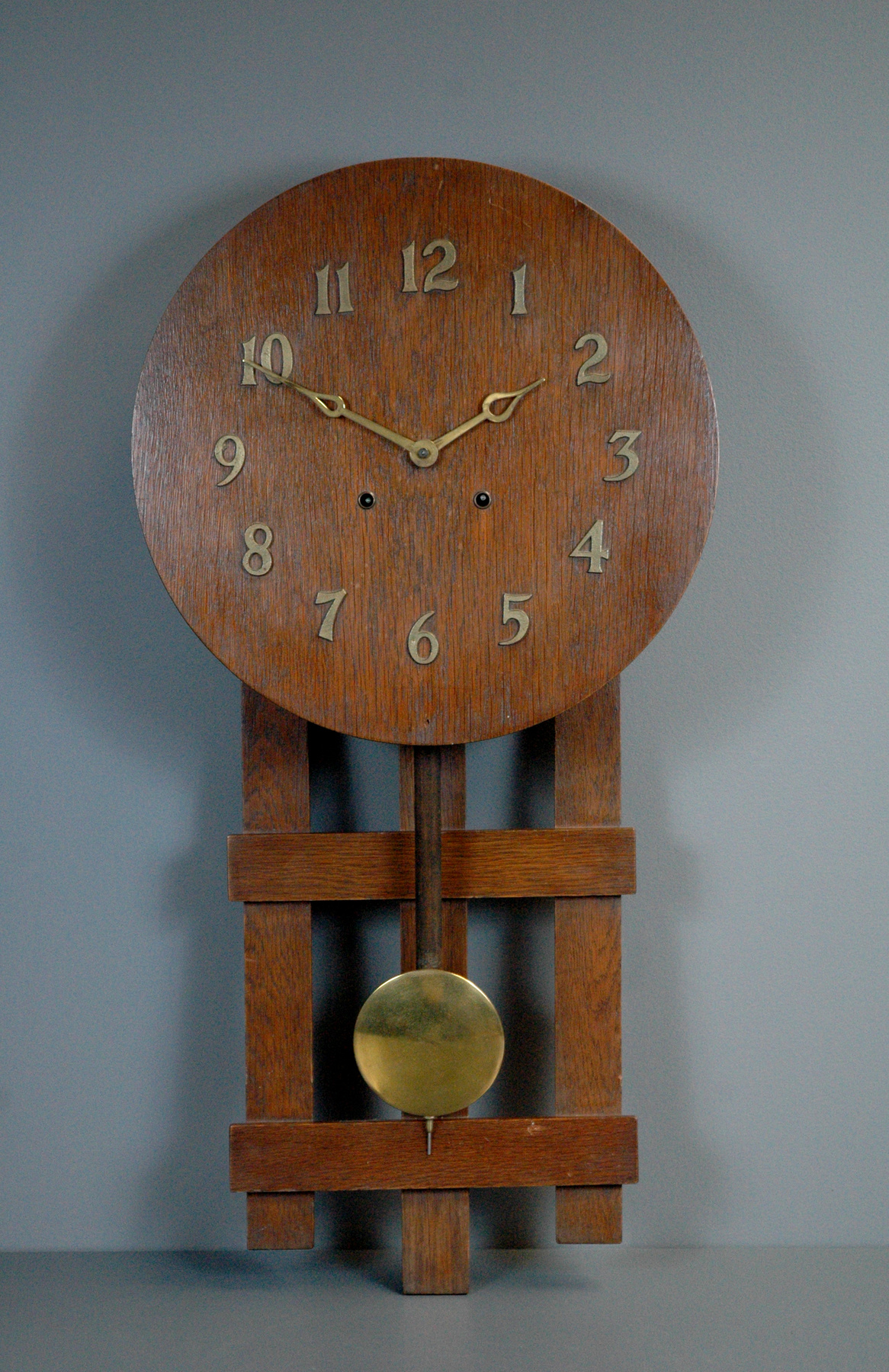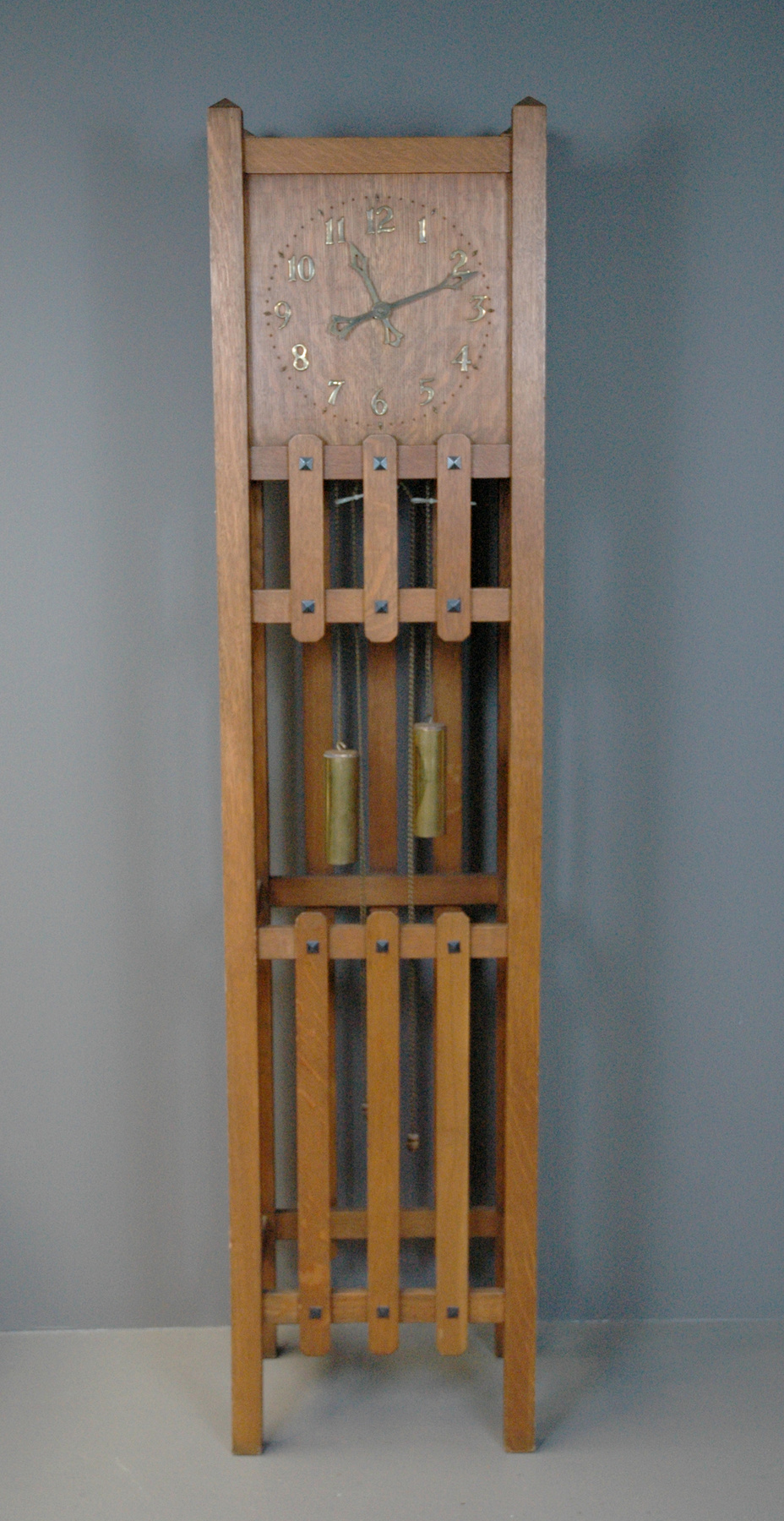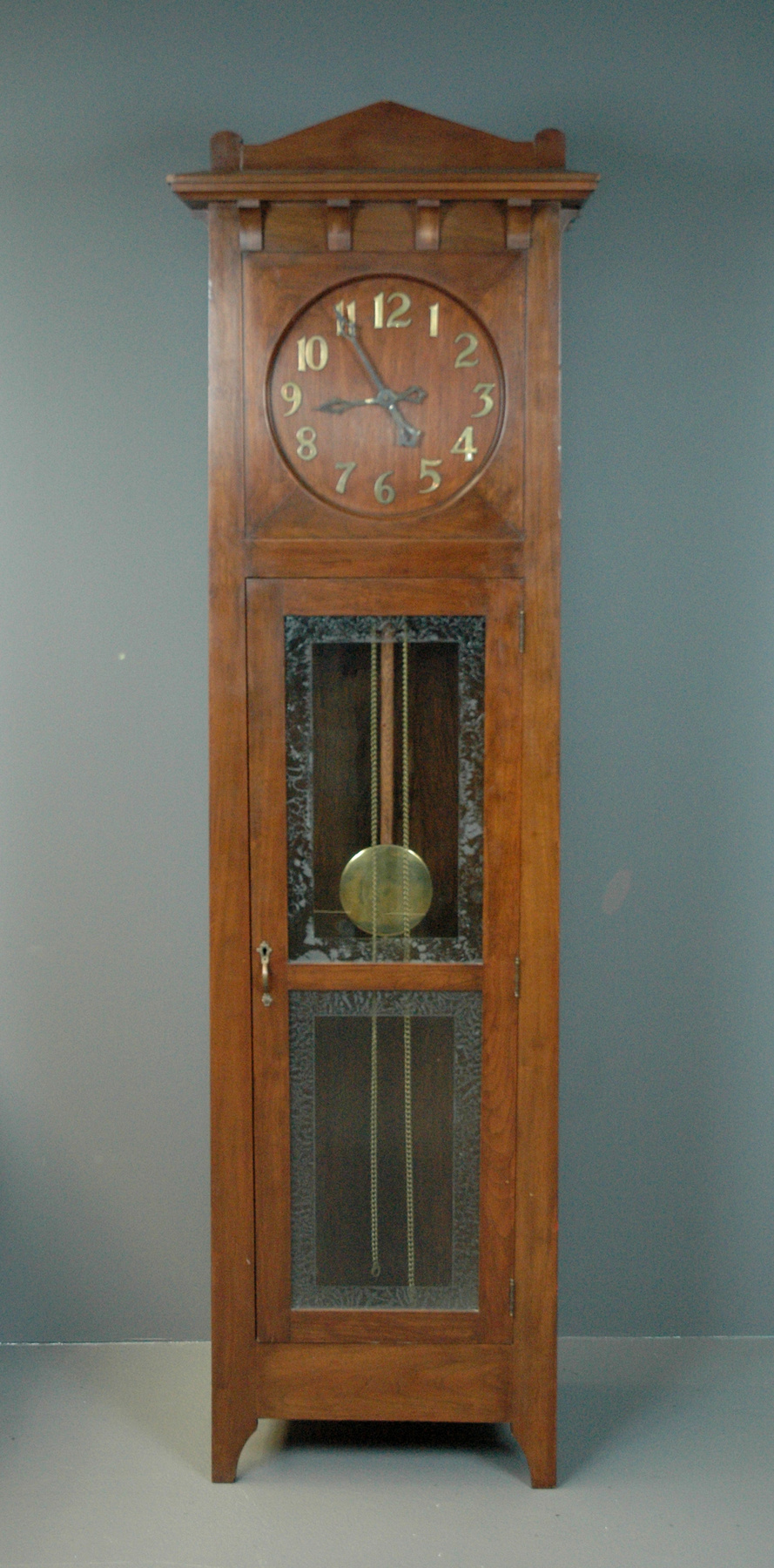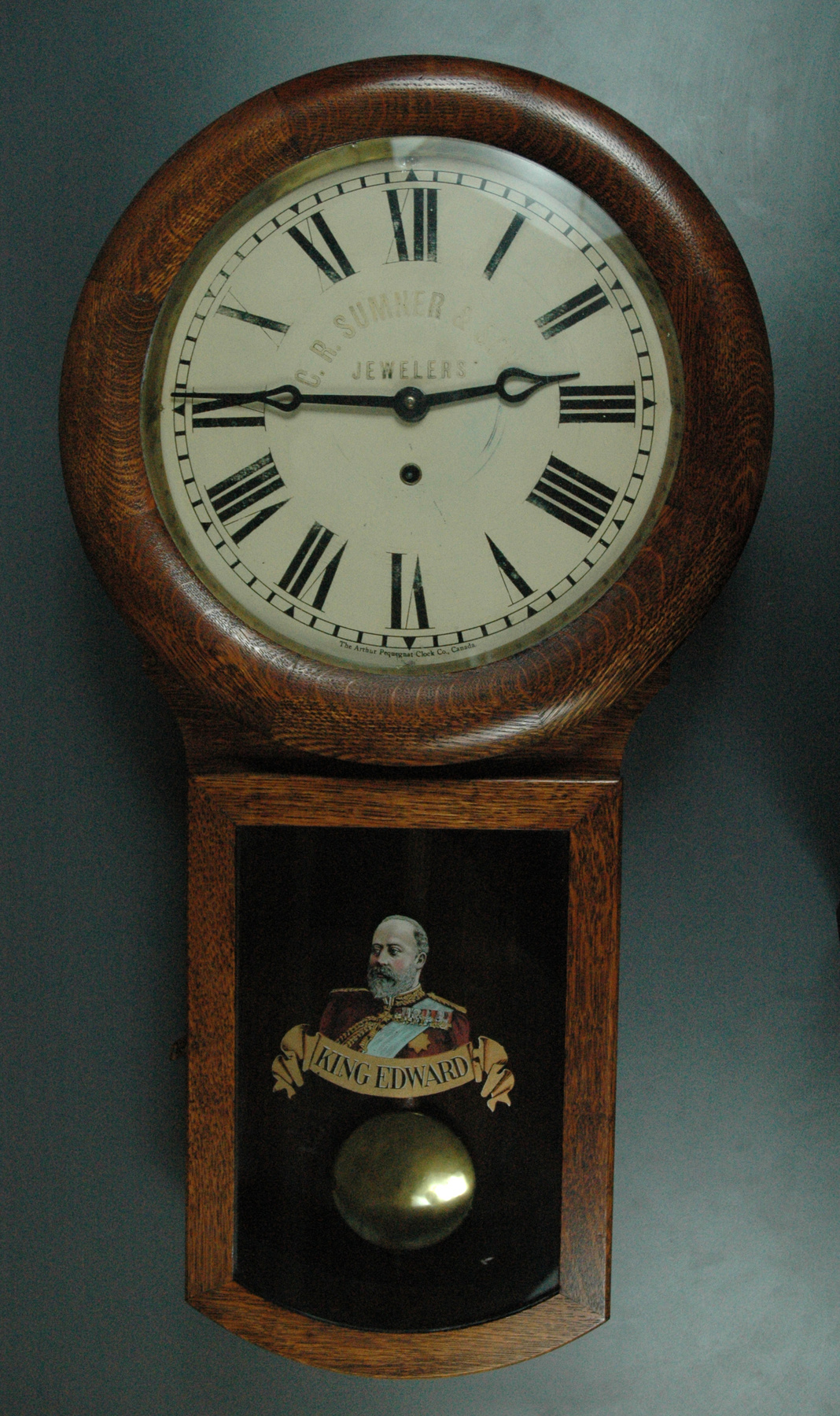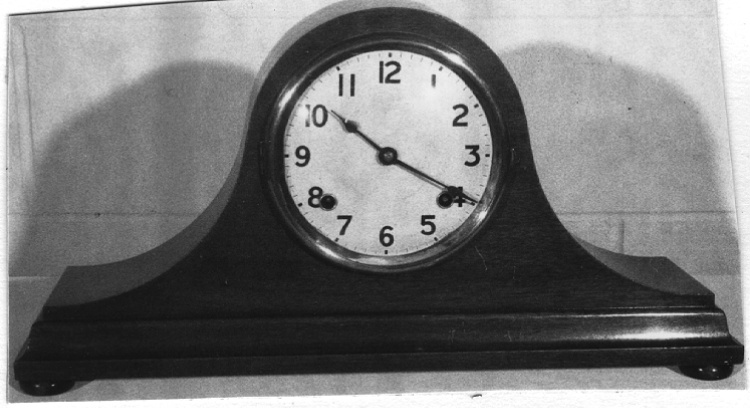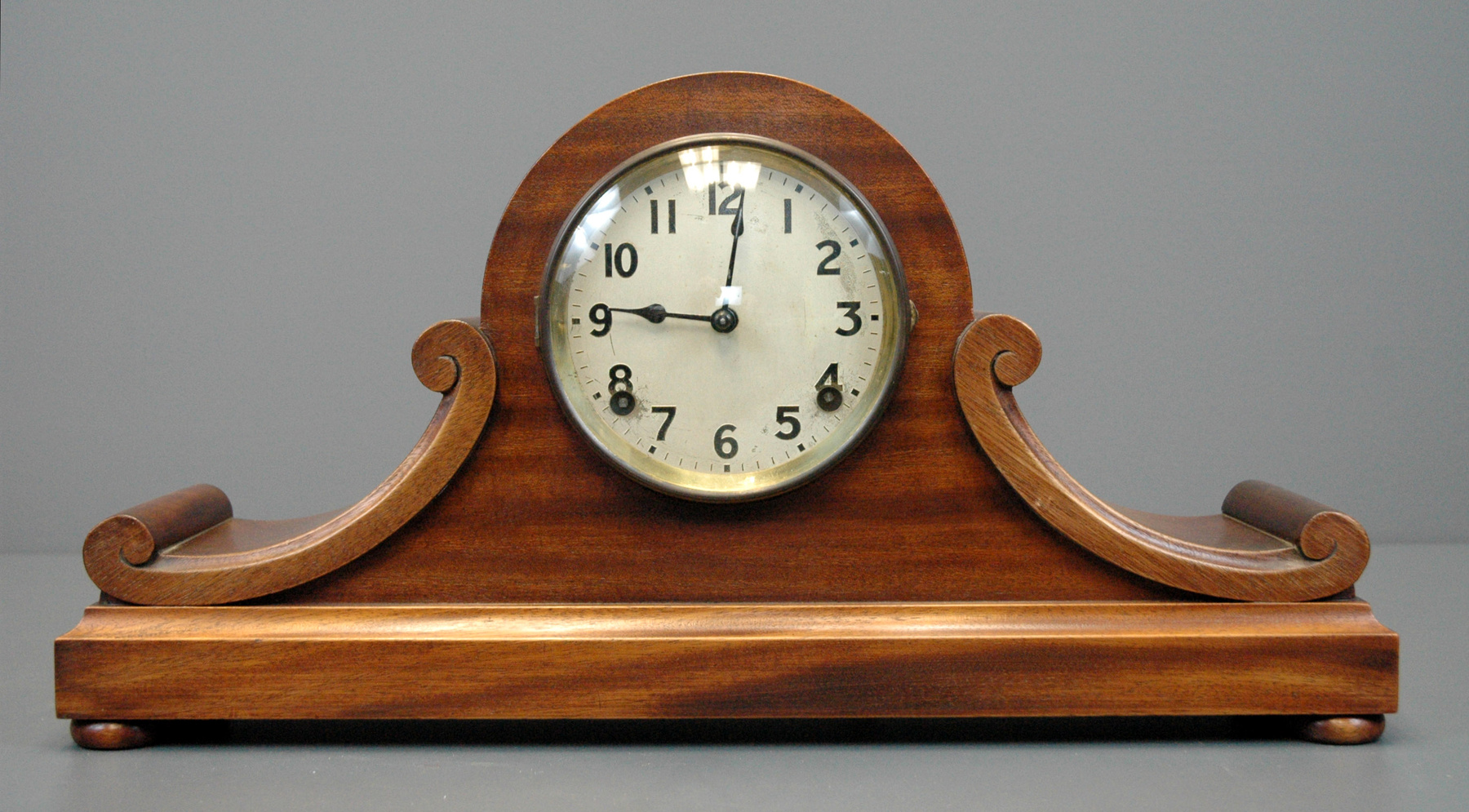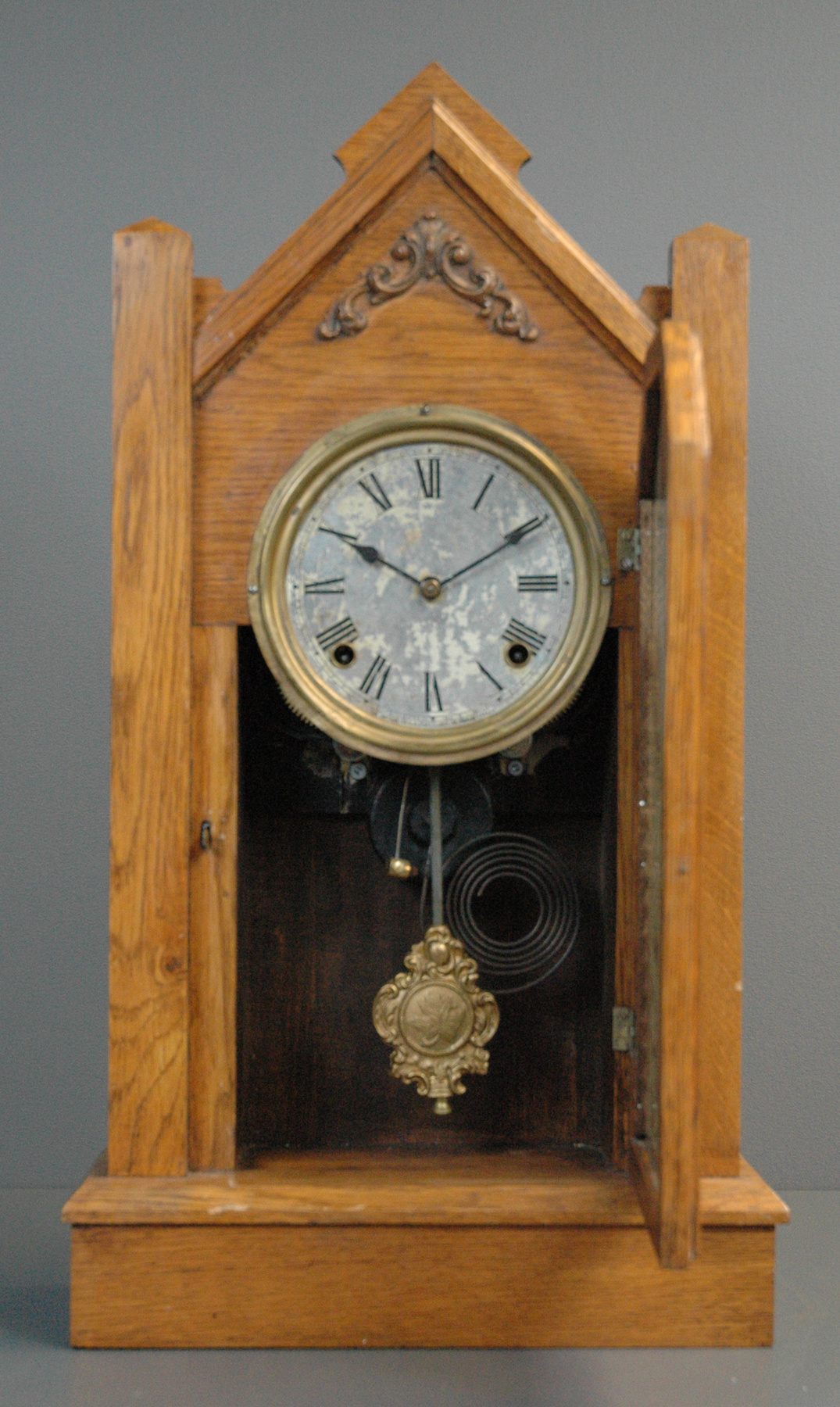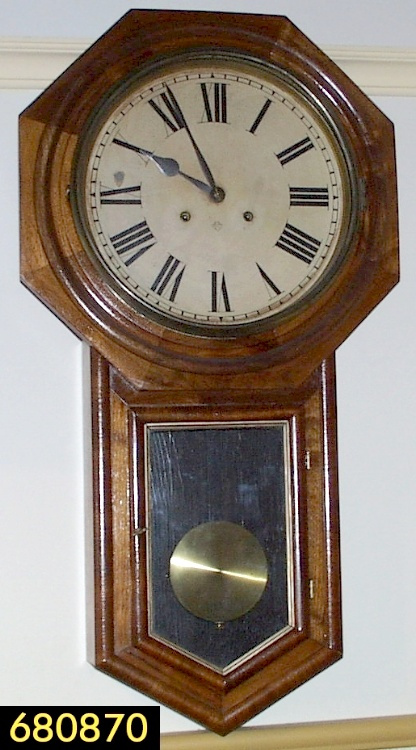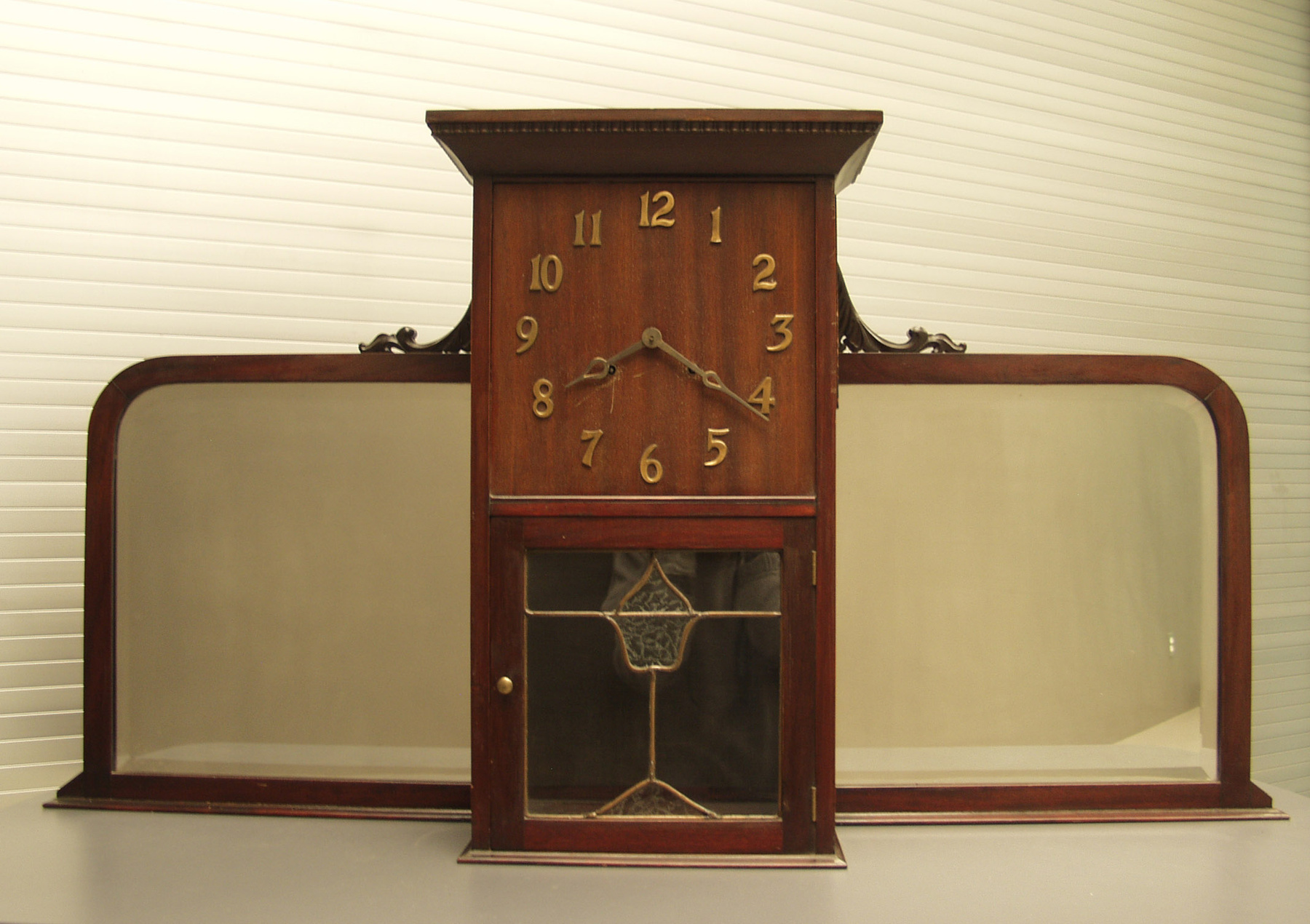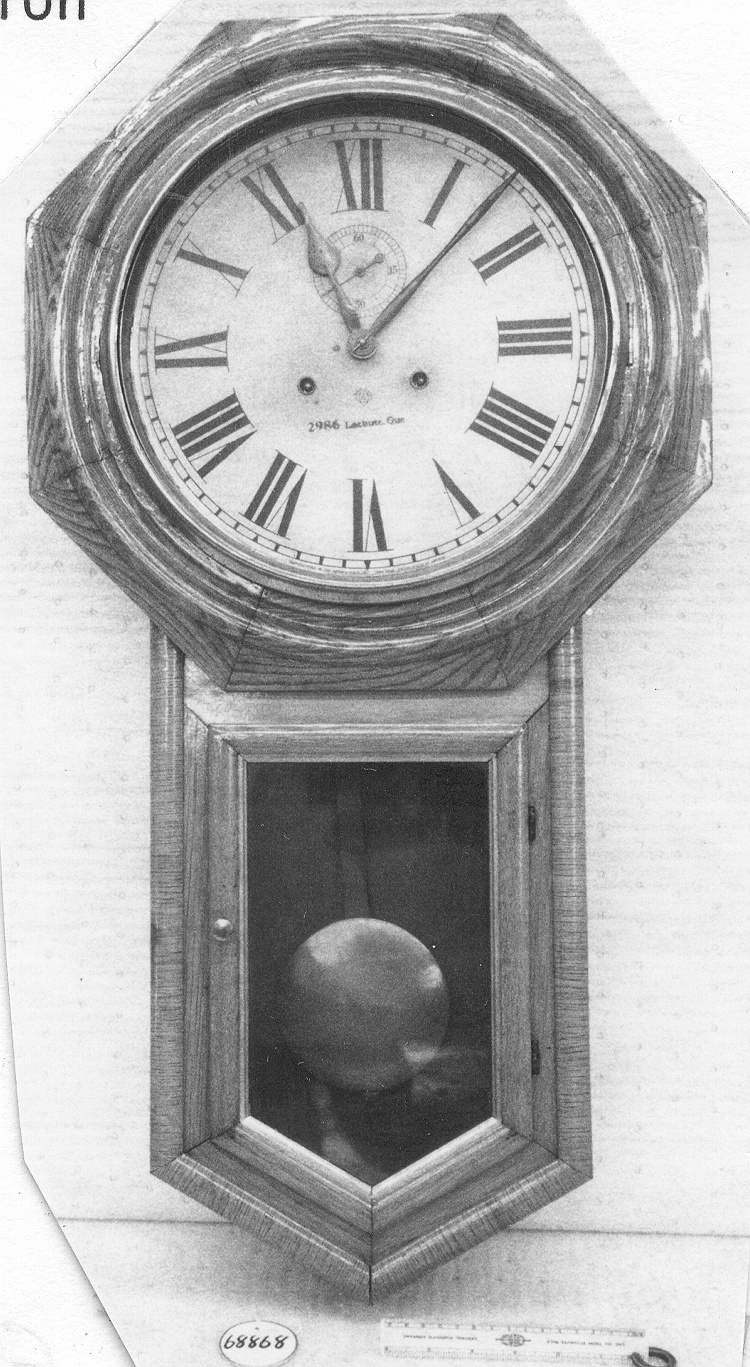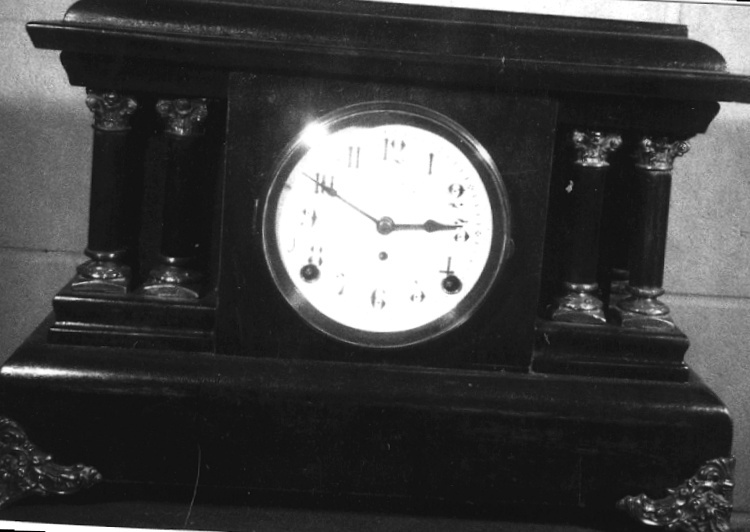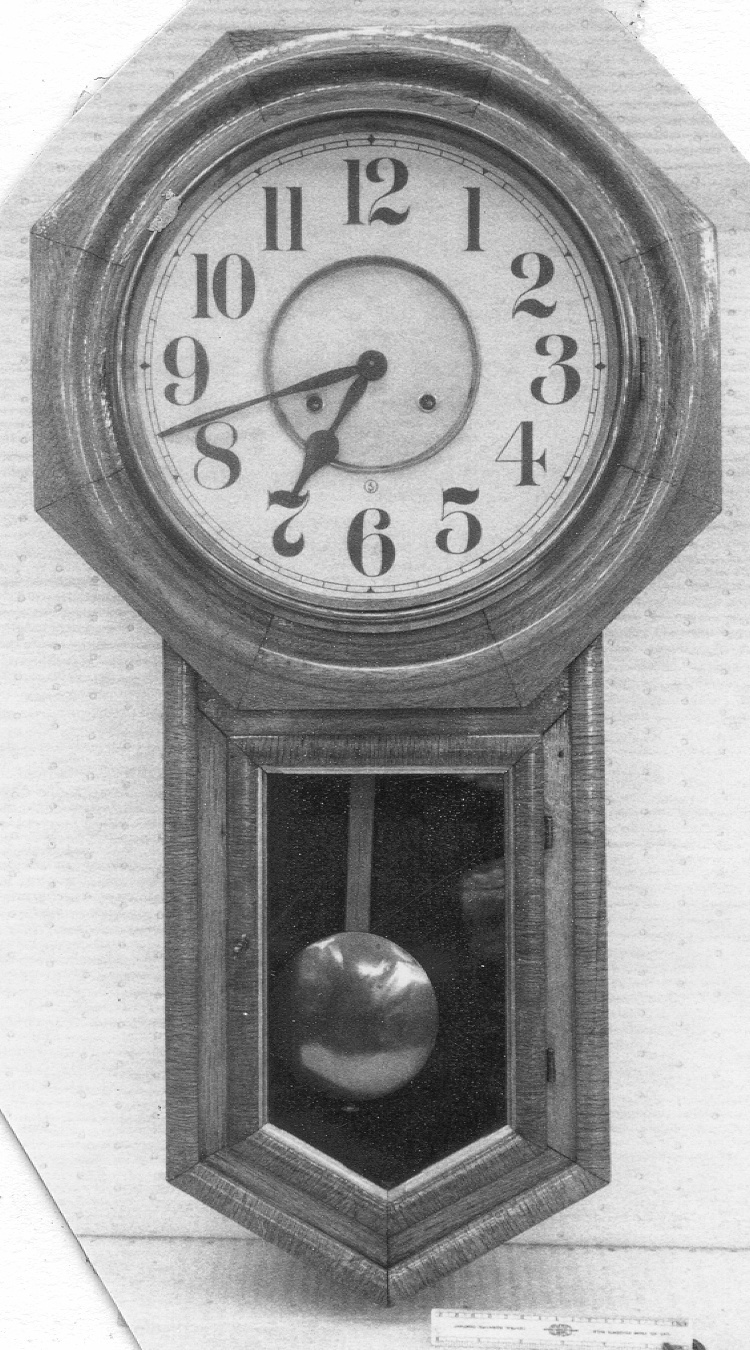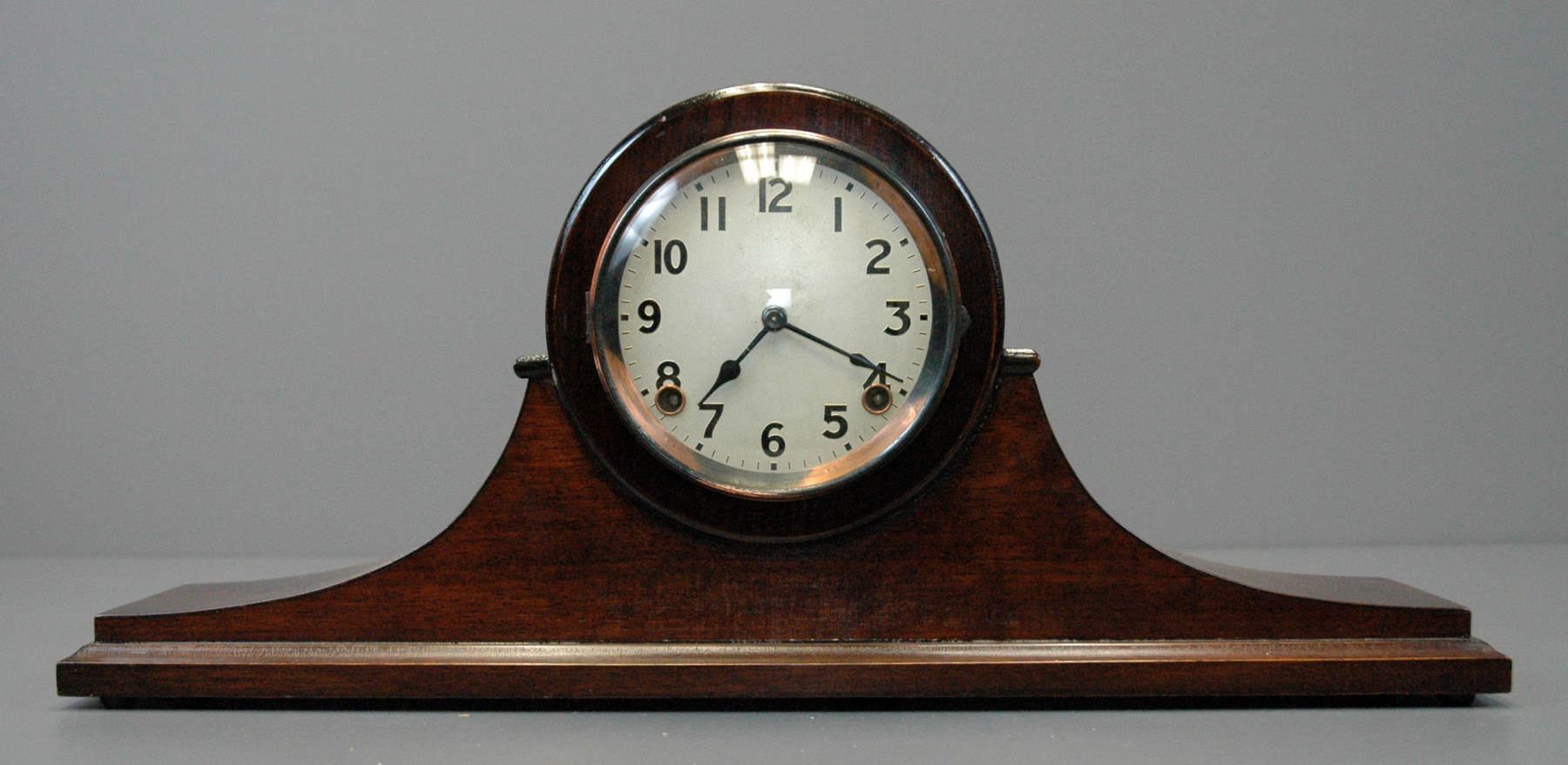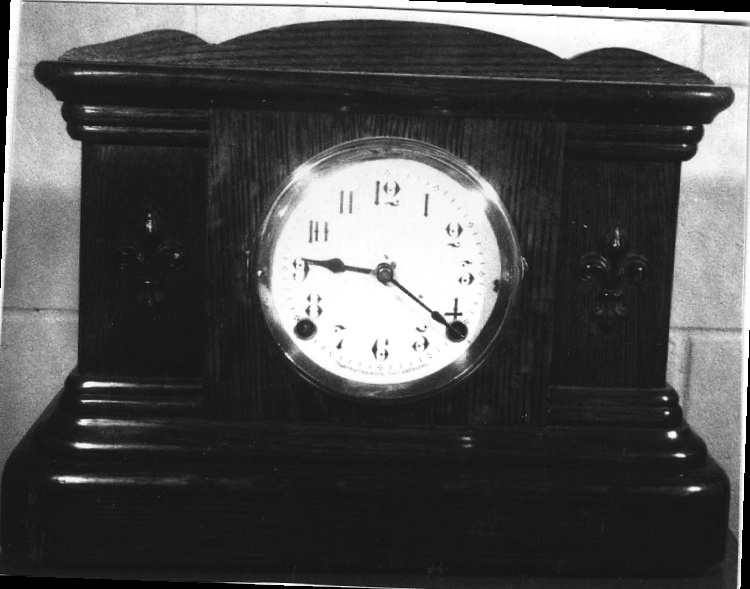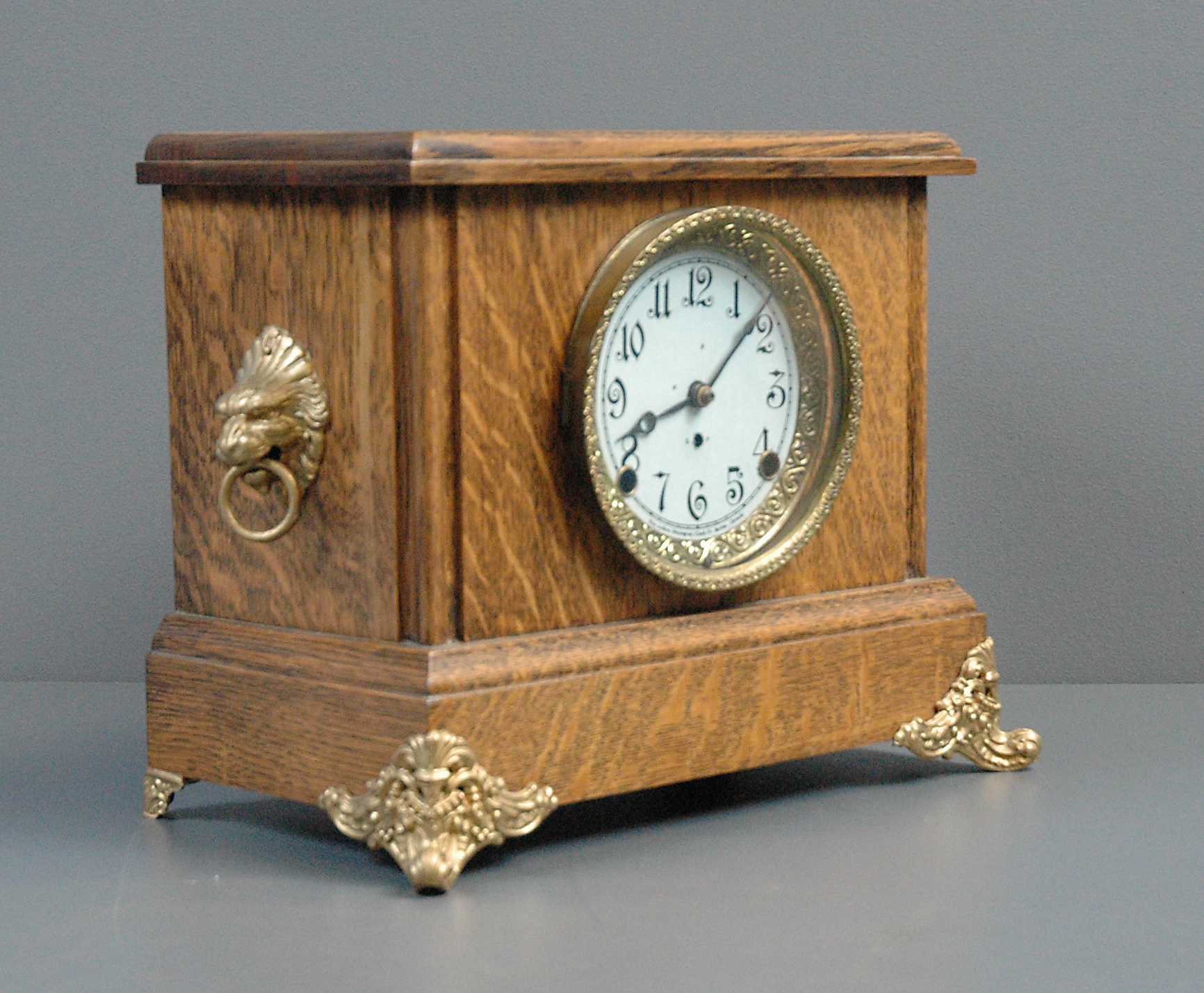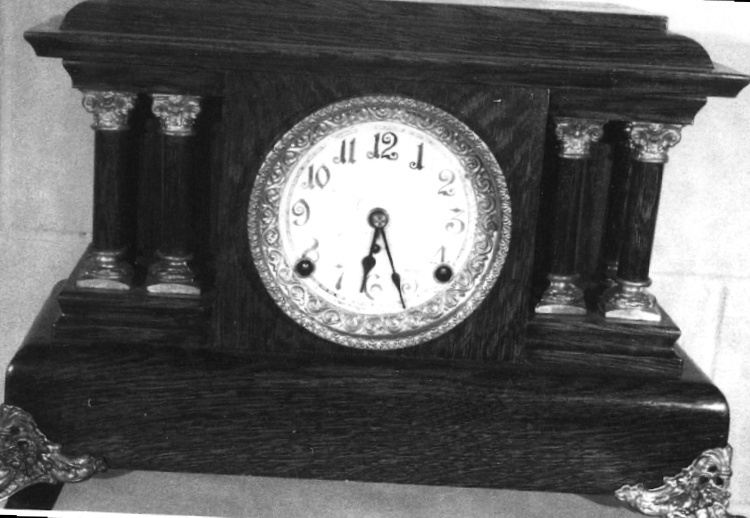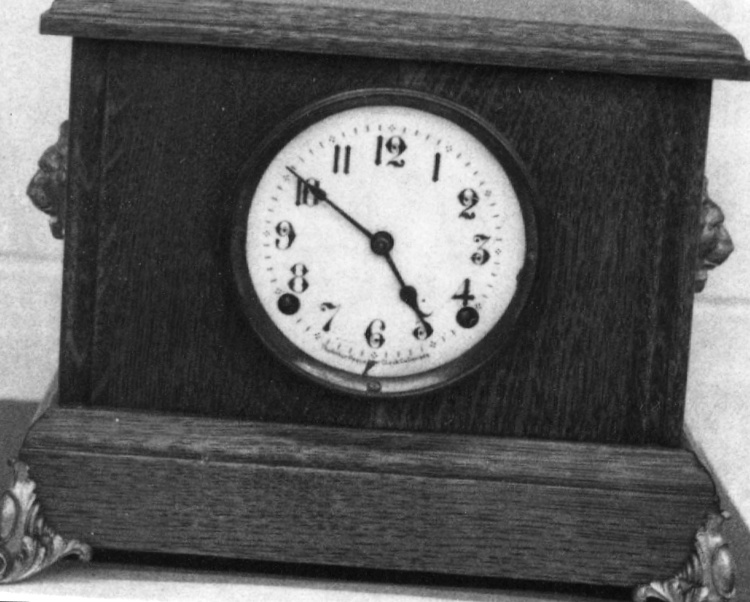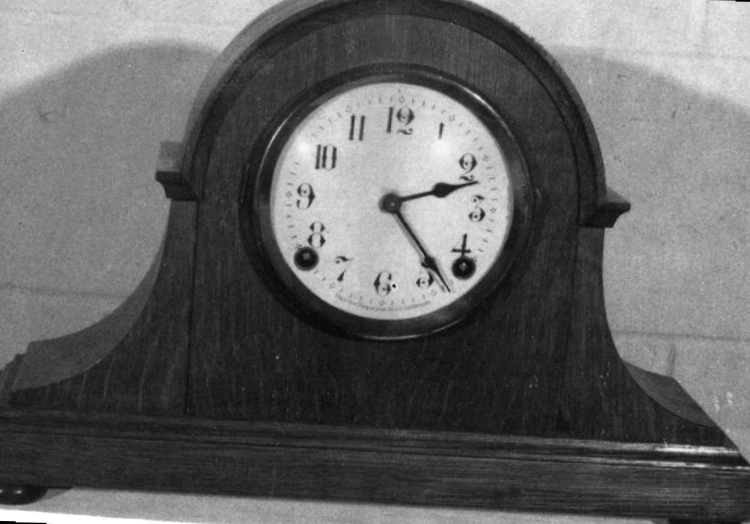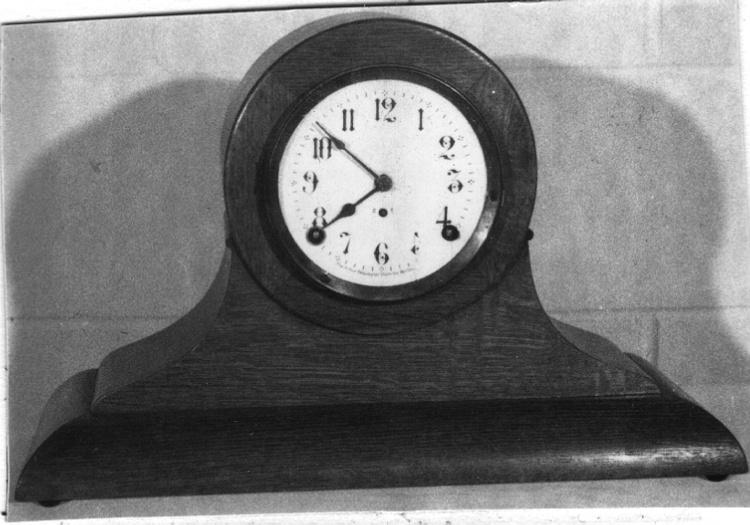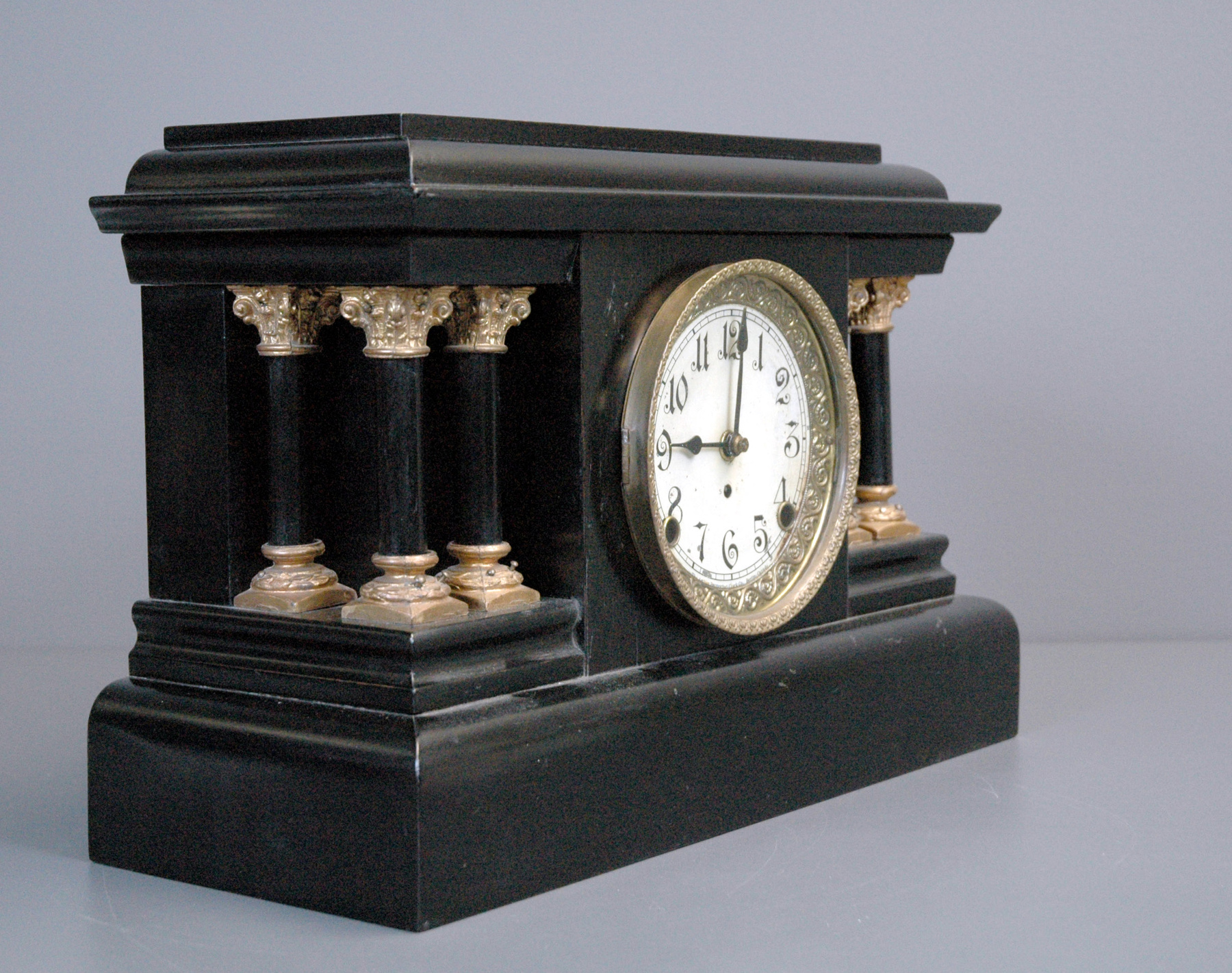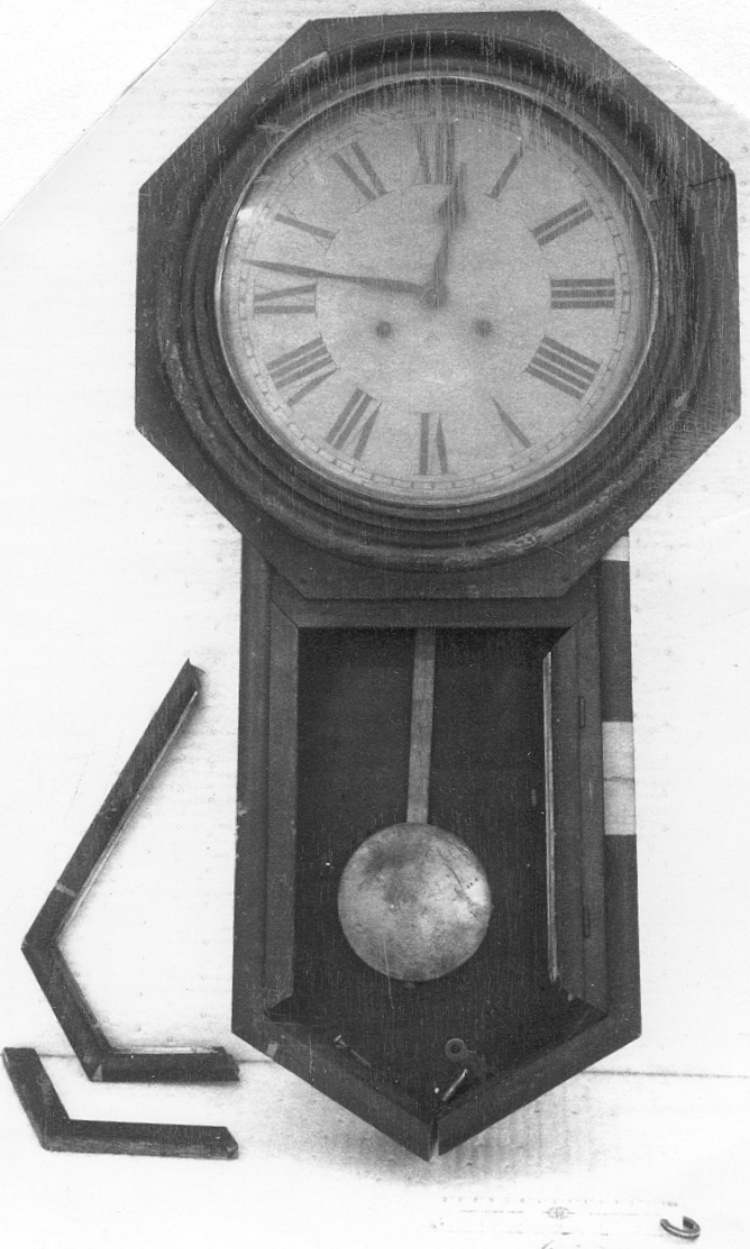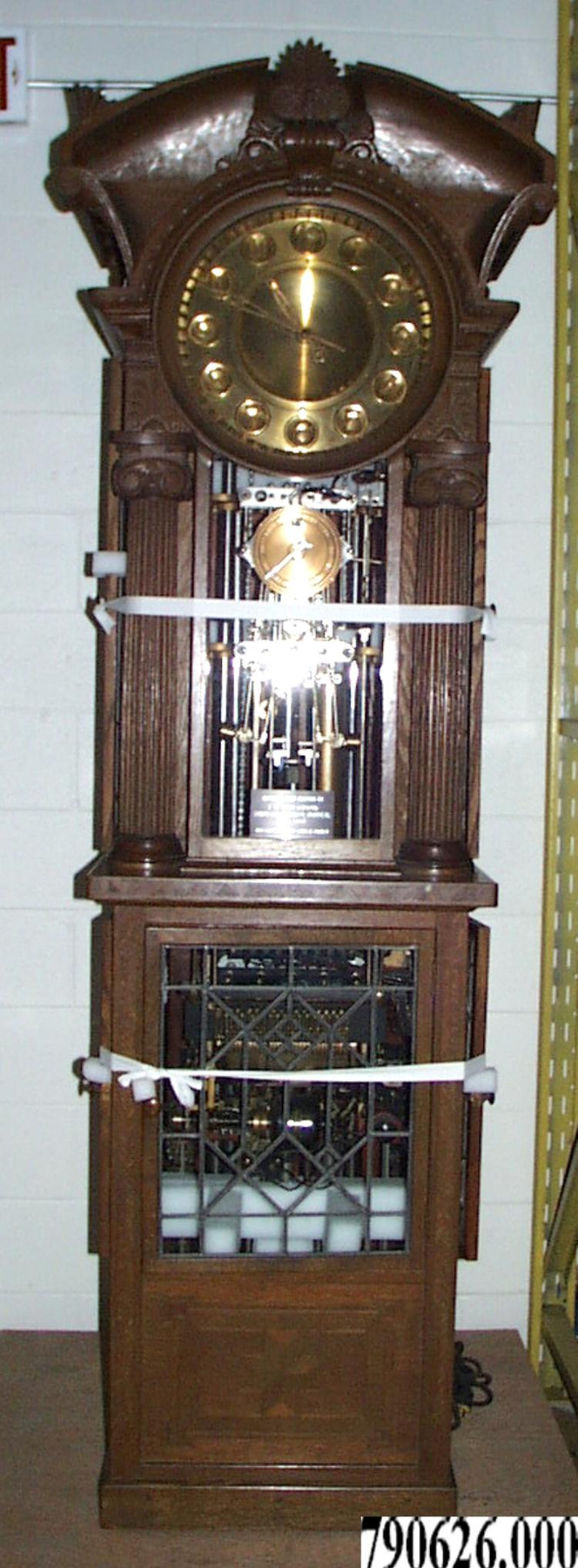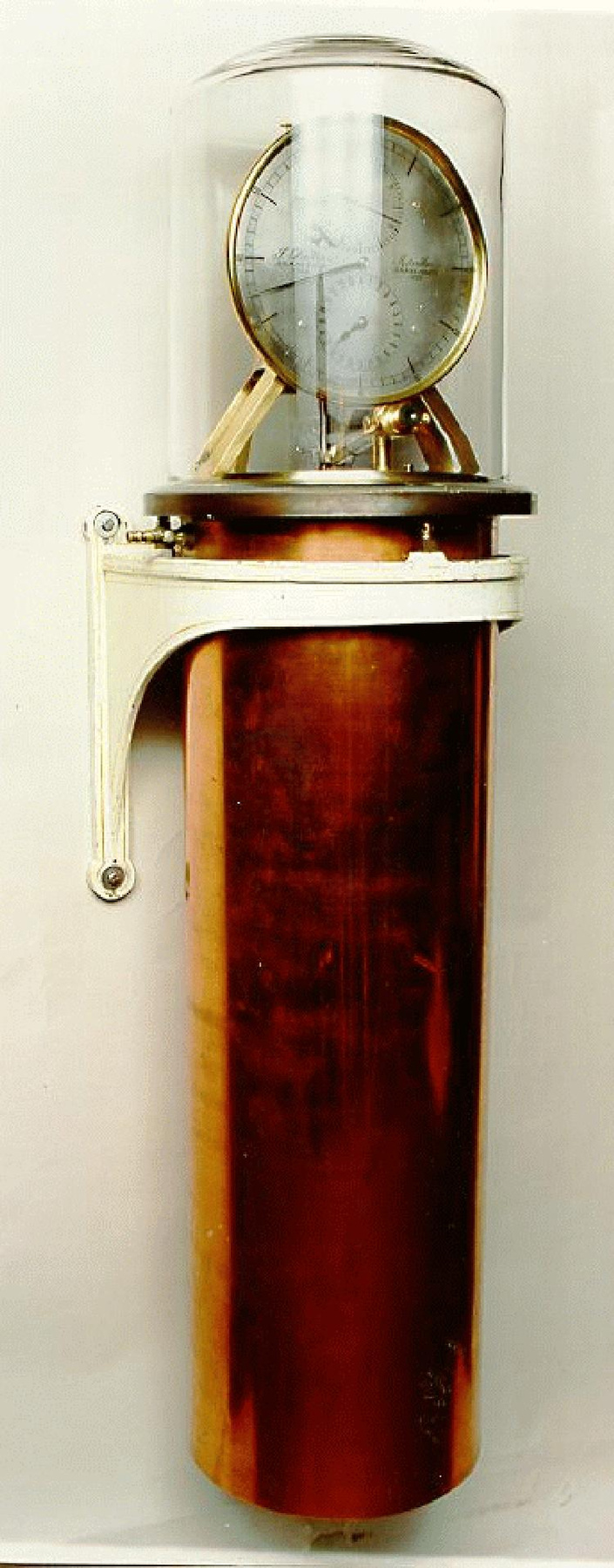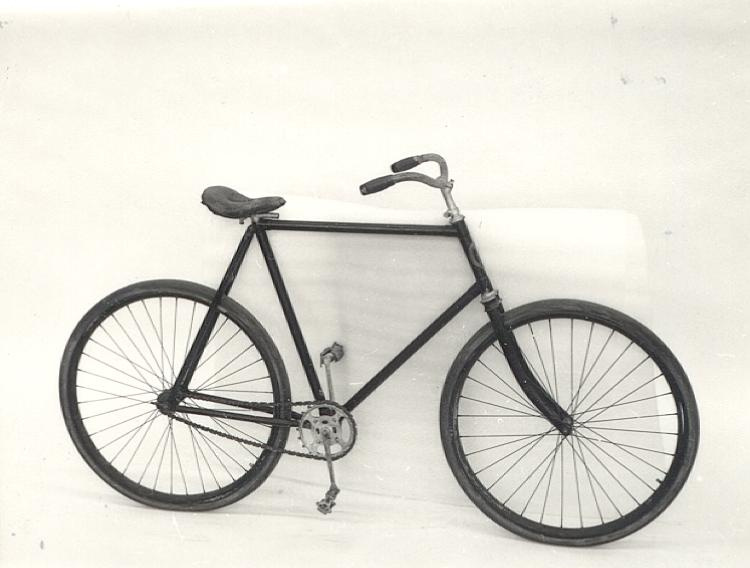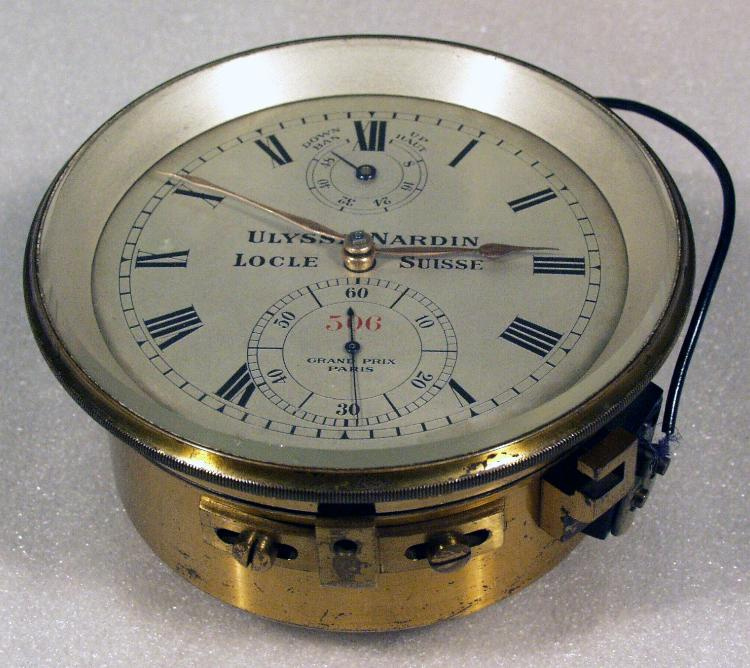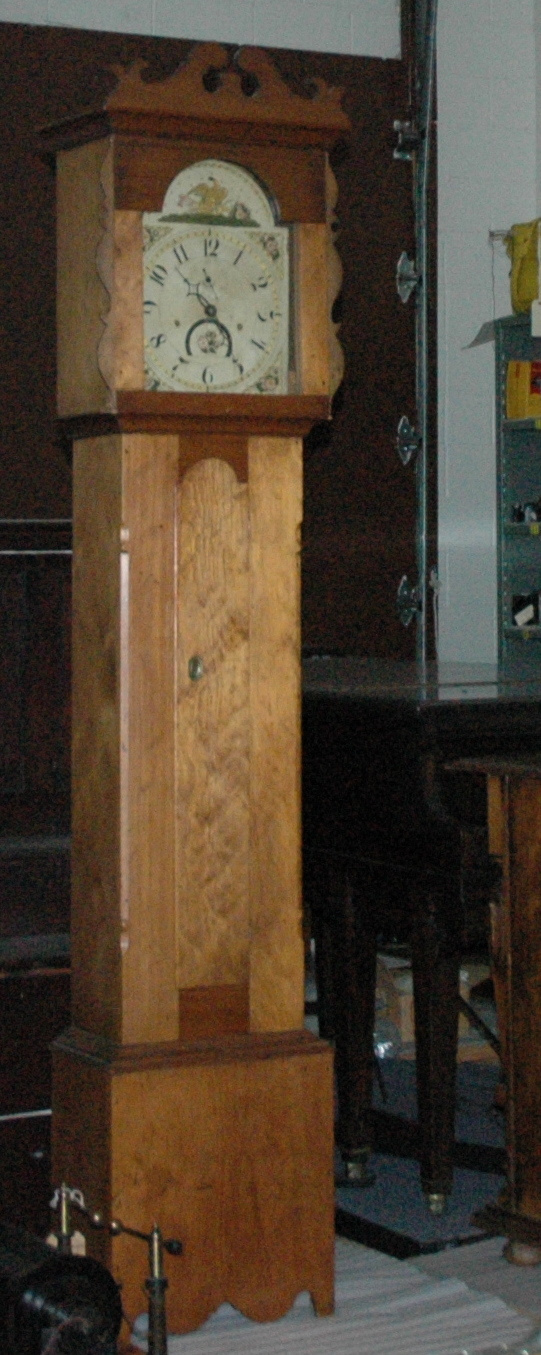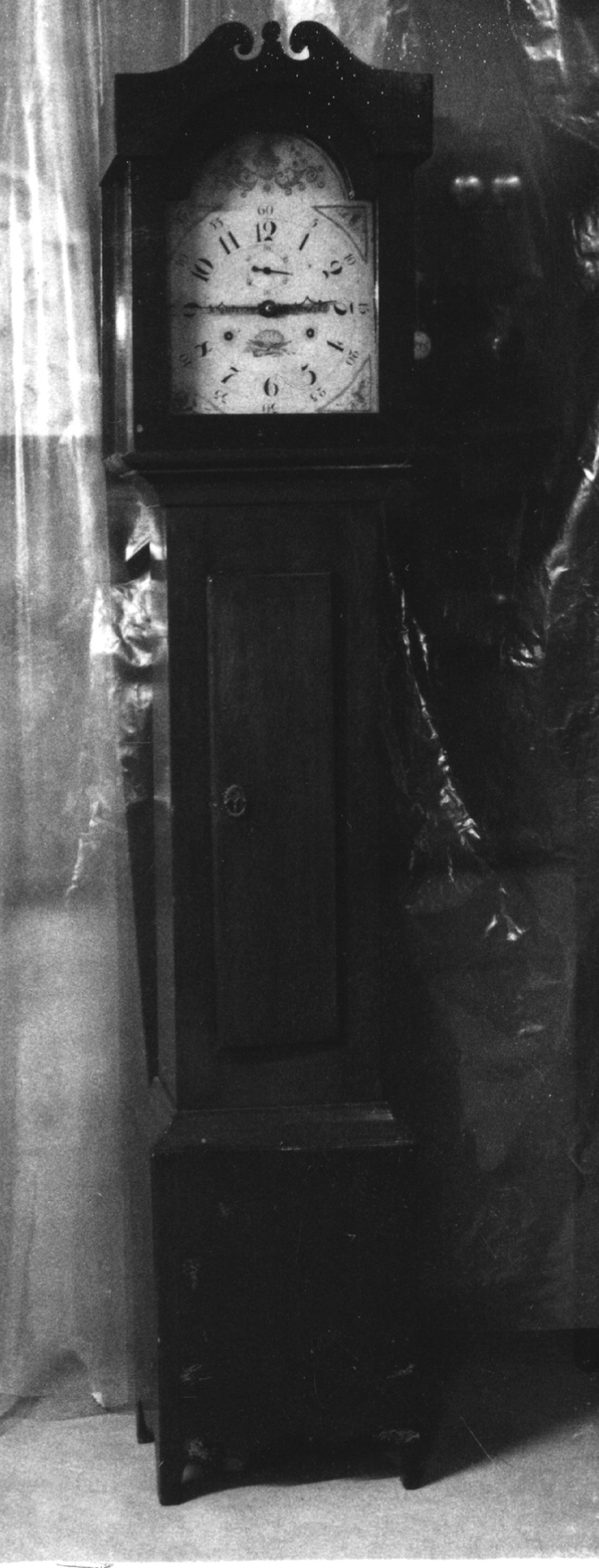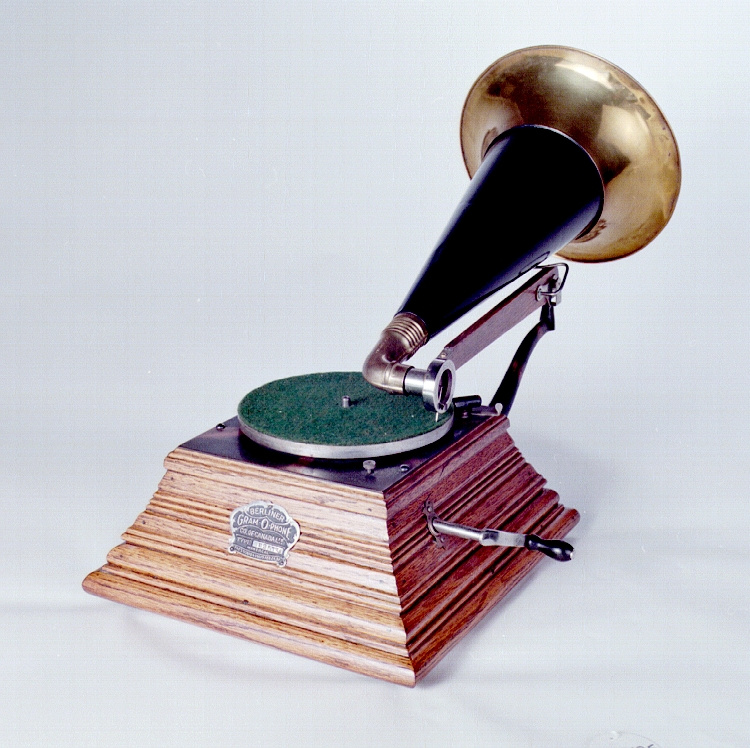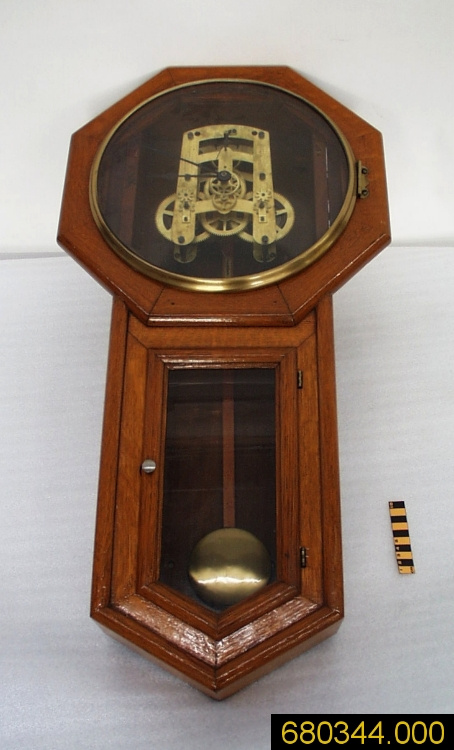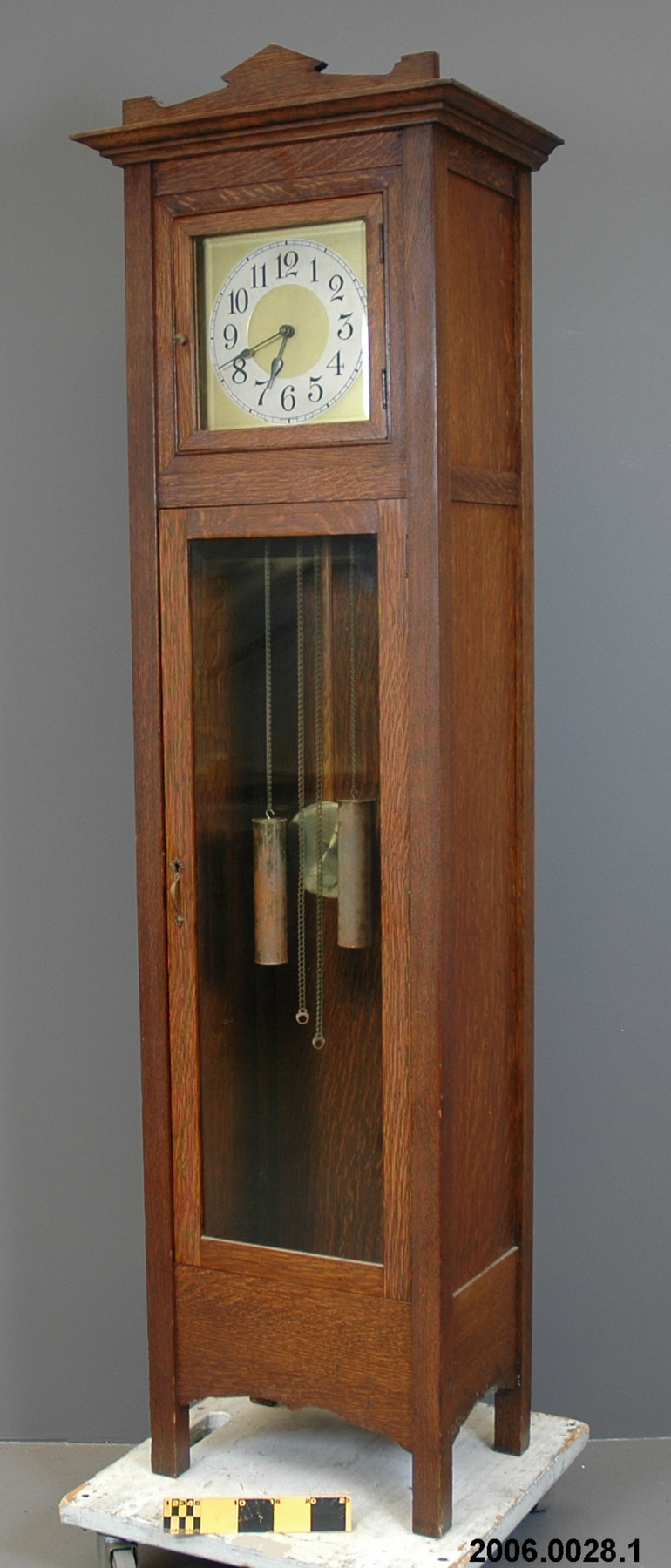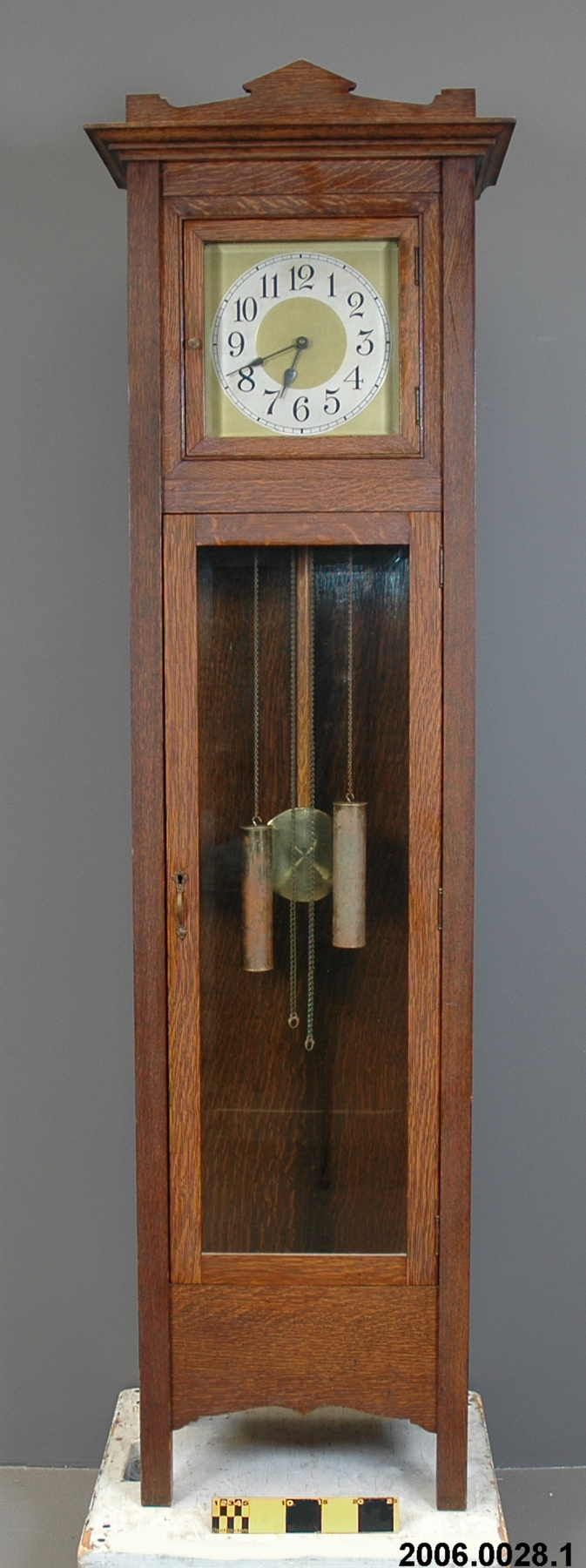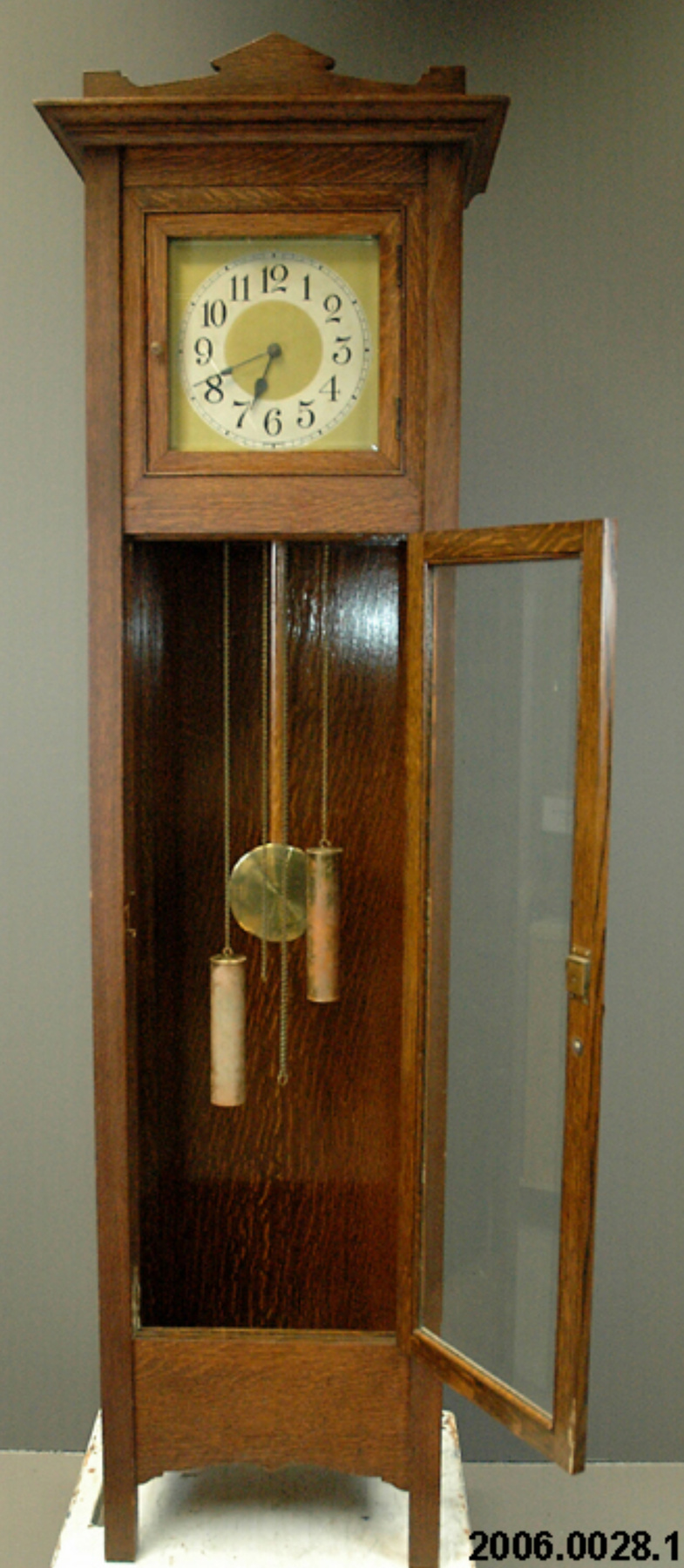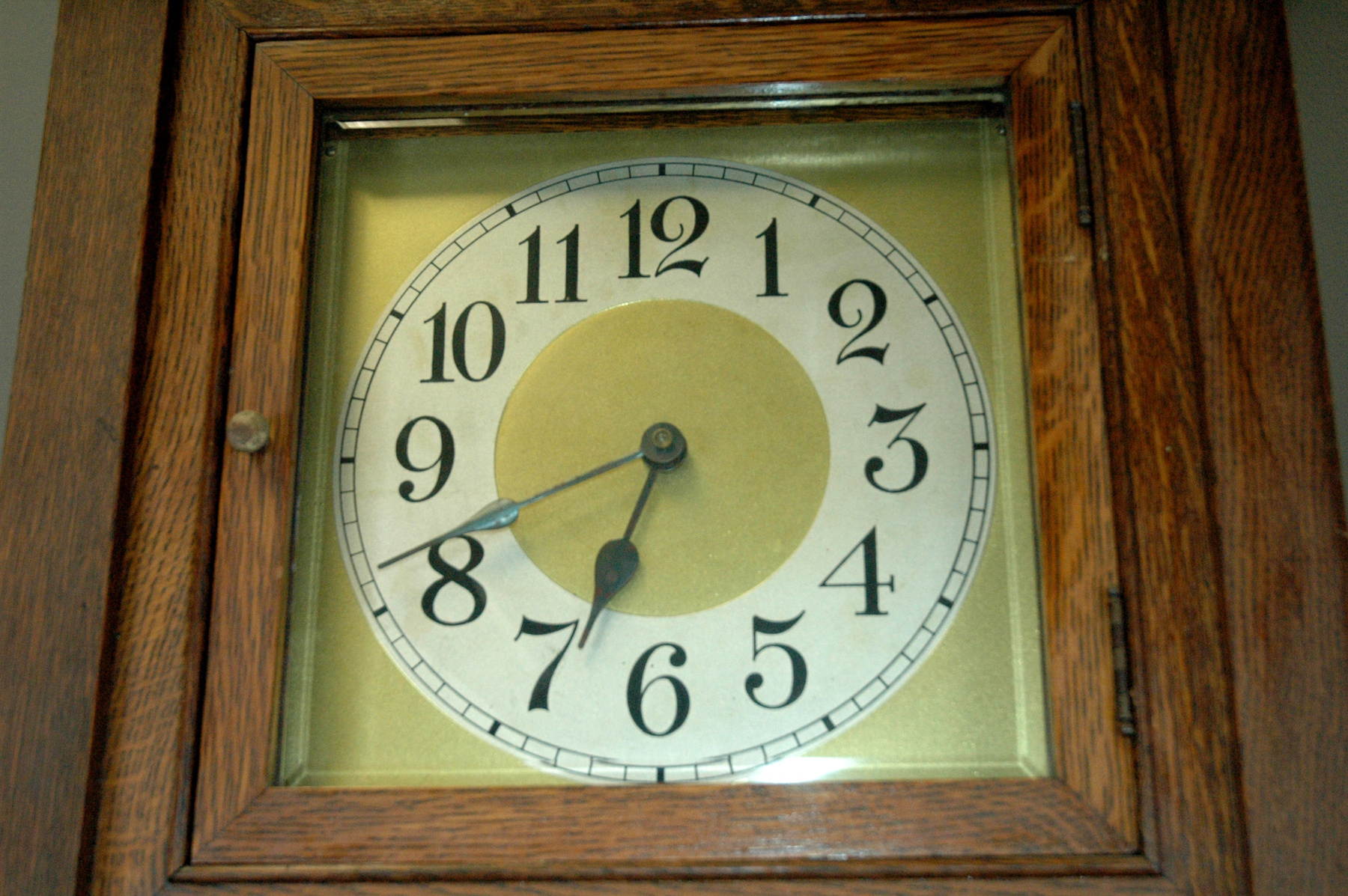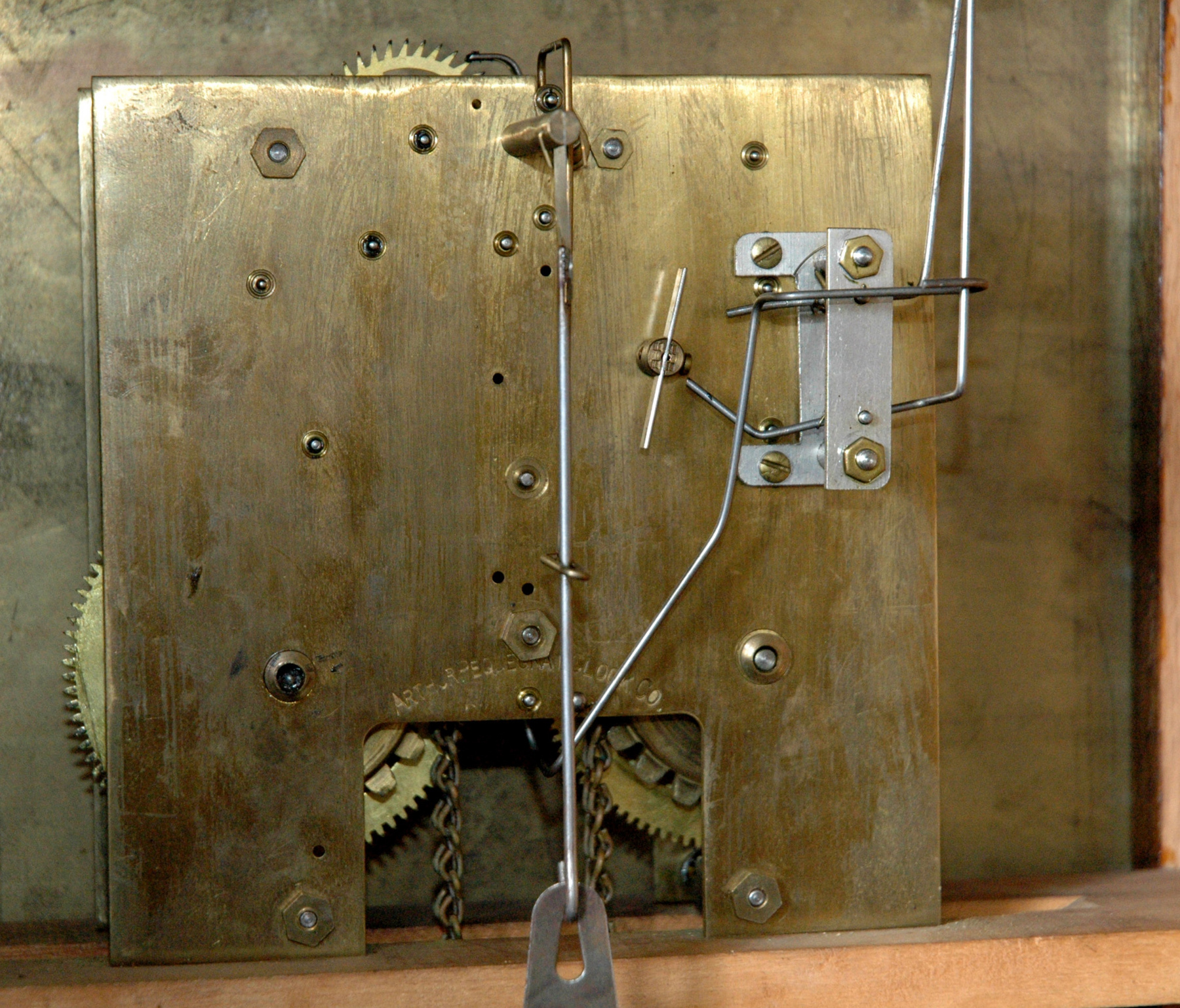Clock
Use this image
Can I reuse this image without permission? Yes
Object images on the Ingenium Collection’s portal have the following Creative Commons license:
Copyright Ingenium / CC BY-NC-ND (Attribution-NonCommercial 4.0 International (CC BY-NC 4.0)
ATTRIBUTE THIS IMAGE
Ingenium,
2006.0028.001
Permalink:
Ingenium is releasing this image under the Creative Commons licensing framework, and encourages downloading and reuse for non-commercial purposes. Please acknowledge Ingenium and cite the artifact number.
DOWNLOAD IMAGEPURCHASE THIS IMAGE
This image is free for non-commercial use.
For commercial use, please consult our Reproduction Fees and contact us to purchase the image.
- OBJECT TYPE
- tall/grandfather
- DATE
- 1918–1943
- ARTIFACT NUMBER
- 2006.0028.001
- MANUFACTURER
- Pequegnat, Arthur Clock Co.
- MODEL
- Halifax
- LOCATION
- Kitchener, Ontario, Canada
More Information
General Information
- Serial #
- N/A
- Part Number
- 1
- Total Parts
- 5
- AKA
- N/A
- Patents
- N/A
- General Description
- wood casing (either oak, mahogany or walnut), pendulum rod, parts/ brass clockwork, dial, pendulum disk, weights, chains/ bevelled glass windows/ metal hardware
Dimensions
Note: These reflect the general size for storage and are not necessarily representative of the object's true dimensions.
- Length
- 46.7 cm
- Width
- 35.5 cm
- Height
- 201.0 cm
- Thickness
- N/A
- Weight
- N/A
- Diameter
- N/A
- Volume
- N/A
Lexicon
- Group
- Horology
- Category
- Clocks
- Sub-Category
- N/A
Manufacturer
- AKA
- Pequegnat
- Country
- Canada
- State/Province
- Ontario
- City
- Kitchener
Context
- Country
- Canada
- State/Province
- Unknown
- Period
- 20th century
- Canada
-
An example of a hall clock made by well known Canadian clock manufacturer. CSTM has 82 other Pequegnat clocks in its collection, including four hall clocks: the Canada (1975.0232 and 1975.0313), the Vernon (1975.0312) and 1975.0311. Information from auctioneers Crowther-Brayley indicates that the consignor's mother purchased the clock while living in Dundas from a clock dealer maker in Hamilton 30 years ago who had had the clock for some time (see Acquisition Proposal). Arthur Pequegnat came from Switzerland to Berlin, Ontario ca. 1874 with his brothers, sisters and parents. In the 1880s he was importing watches for sale locally in western Ontario. Around 1897 Arthur built a factory in Berlin to manufacture bicycles. When that market started to decline, he began in 1904 to convert part of his factory over to making clock movements. Initially his clock cases were produced in local furniture factories, typically with quarter-cut oak but occasionally with mahogany or walnut. Later he set up his own small factory for case production in nearby Breslau. The town name was changed from Berlin to Kitchener in 1916. After Arthur died in 1927, relatives continued to operate the company until 1941. At that time the shortage of brass, a key component of the clock movements and other parts, forced the business to shut down. The history of the Pequegnat Clock company has been documented by Jane and Costas Varkaris (ref. 1). Six original company catalogues were found during research for the book, but no company production records were ever discovered. Approximately sixty-five catalogued models of mantel clock are known, as well as sixteen models of wall clock (with variations) and seven models of grandfather (hall) clock. The Pequegnat company also sold several "clock kits" for various sizes of clocks (Ref. 2). An example of a hall (grandfather) clock made by well known a well known Canadian clock manufacturer. CSTM has 82 other Pequegnat clocks in its collection, including four hall clocks: the Canada (1975.0232 and 1975.0313), the Vernon (1975.0312) and 1975.0311. Arthur Pequegnat came from Switzerland to Berlin, Ontario ca. 1874 with his brothers, sisters and parents. In the 1880s he was importing watches for sale locally in western Ontario. Around 1897 Arthur built a factory in Berlin to manufacture ... bicycles! When that market started to decline, he began in 1904 to convert part of his factory over to making clock movements. Initially his clock cases were produced in local furniture factories, typically with quarter-cut oak but occasionally with mahogany or walnut. Later he set up his own small factory for case production in nearby Breslau. The town name was changed from Berlin to Kitchener in 1916. After Arthur died in 1927, relatives continued to operate the company until 1941. At that time the shortage of brass, a key component of the clock movements and other parts, forced the business to shut down. - Function
-
A device which both measures the passage of time and displays the current time. - Technical
-
An example of a tall grandfather style clock with a silvered brass dial, brass weights, two bevelled glass doors and a case of oak, mahogany or walnut. This example with the silvered brass dial is the second version of the Halifax model; its predecessor had a mission type dial (Ref. 5). According to Varkaris, the mission style Halifax model was first appeared in the Supplement to the 1904 Catalogue 1 and the 1913 Catalogue 3. The second version of the Halifax clock, with the silvered brass dial, appeared only in the 1918 Catalogue 4 and in neither of the two later catalogues (Ref. 1). This clock has a Pequegnat No. 13 clock movement, described as a grandfather clock movement, eight day, double strike as used in the Alberta model, complete with chains, brass weights, a pendulum, brass hands and tuned rods. The silvered brass dial was available for an additional cost (Ref. 1). - Area Notes
-
Unknown
Details
- Markings
- interior paper label reads 'MADE BY/THE ARTHUR PEQUEGNAT CLOCK CO./ KITCHENER - CANADA/ DIRECTIONS/ If this clock should go too fast, lower the Pendulum/ Ball; if it is too slow, raise it./ THIS CLOCK IS FULLY GUARANTEED. IF FOUND DEFECTIVE/ ADVISE THE MAKERS OR YOUR LOCAL DEALER.'/ incised lettering on mechanism reads 'ARTHUR PEQUEGNAT CLOCK CO.'/ black Arabic numerals
- Missing
- appears complete
- Finish
- dark brown coated wood/ silvered brass dial on gold coloured plate/ black hands and numbers/ gold coloured chains discoloured
- Decoration
- decorative wood work on case top
CITE THIS OBJECT
If you choose to share our information about this collection object, please cite:
Pequegnat, Arthur Clock Co., Clock, between 1918–1943, Artifact no. 2006.0028, Ingenium – Canada’s Museums of Science and Innovation, http://collection.ingeniumcanada.org/en/id/2006.0028.001/
FEEDBACK
Submit a question or comment about this artifact.
More Like This
